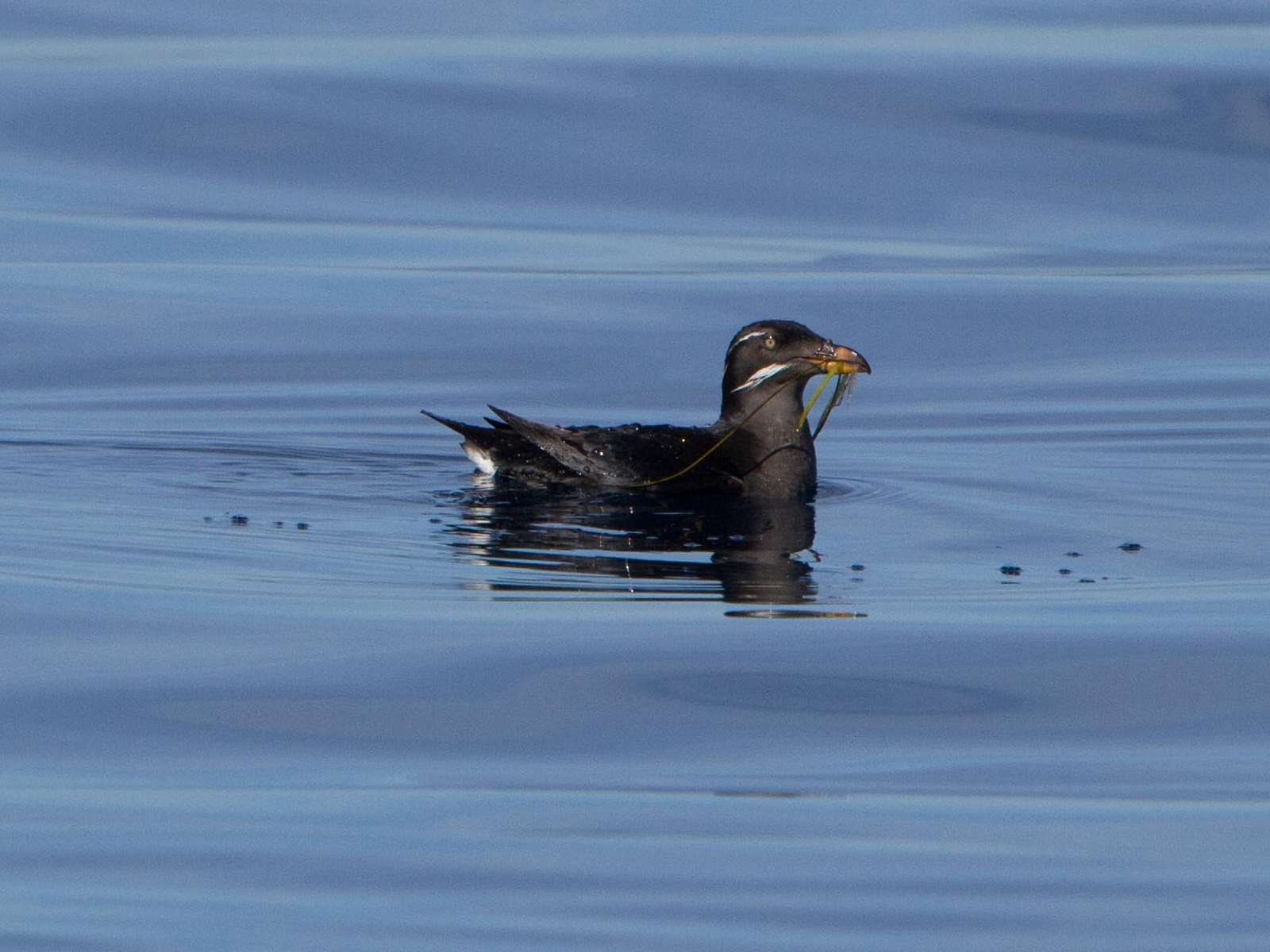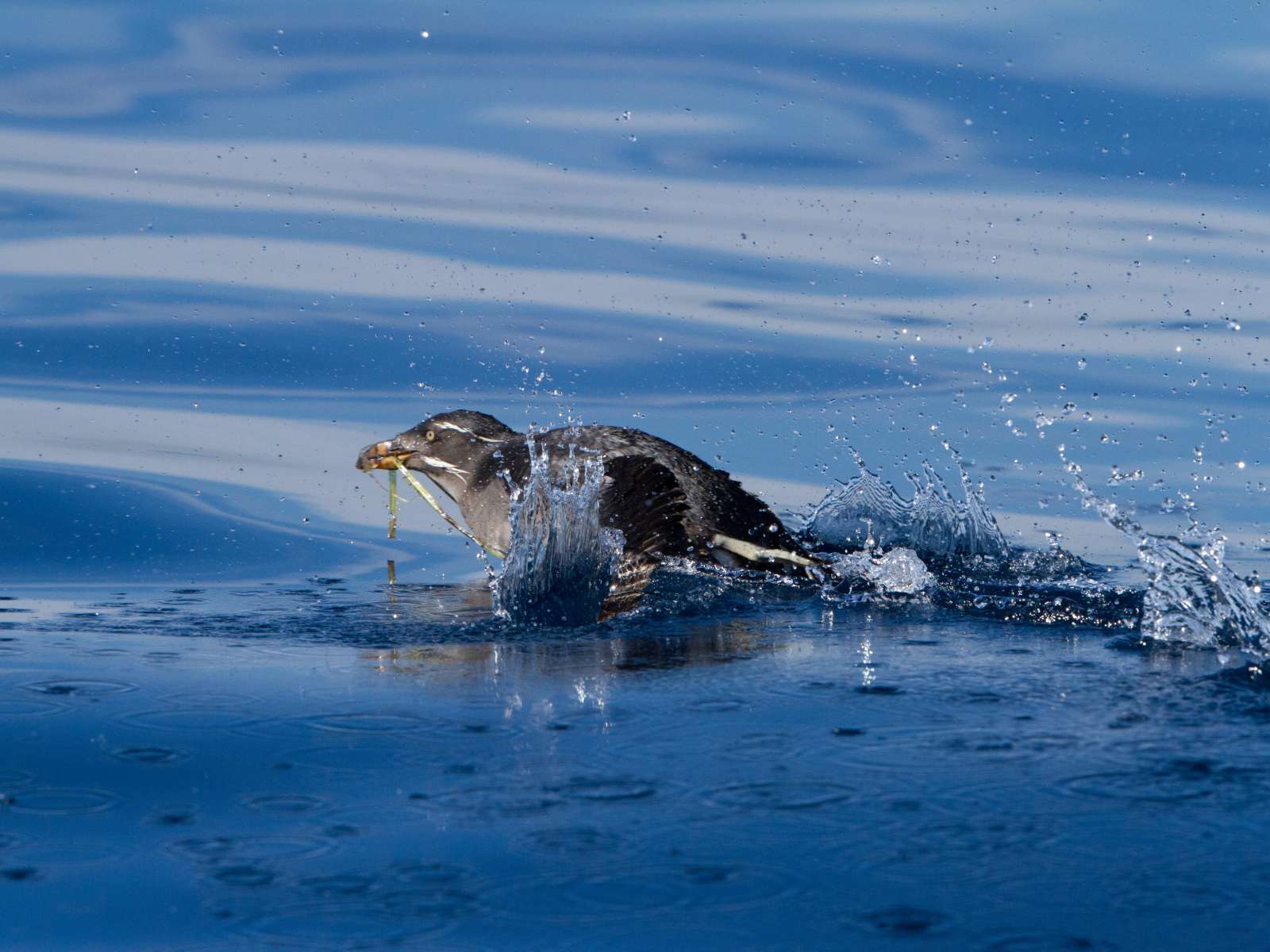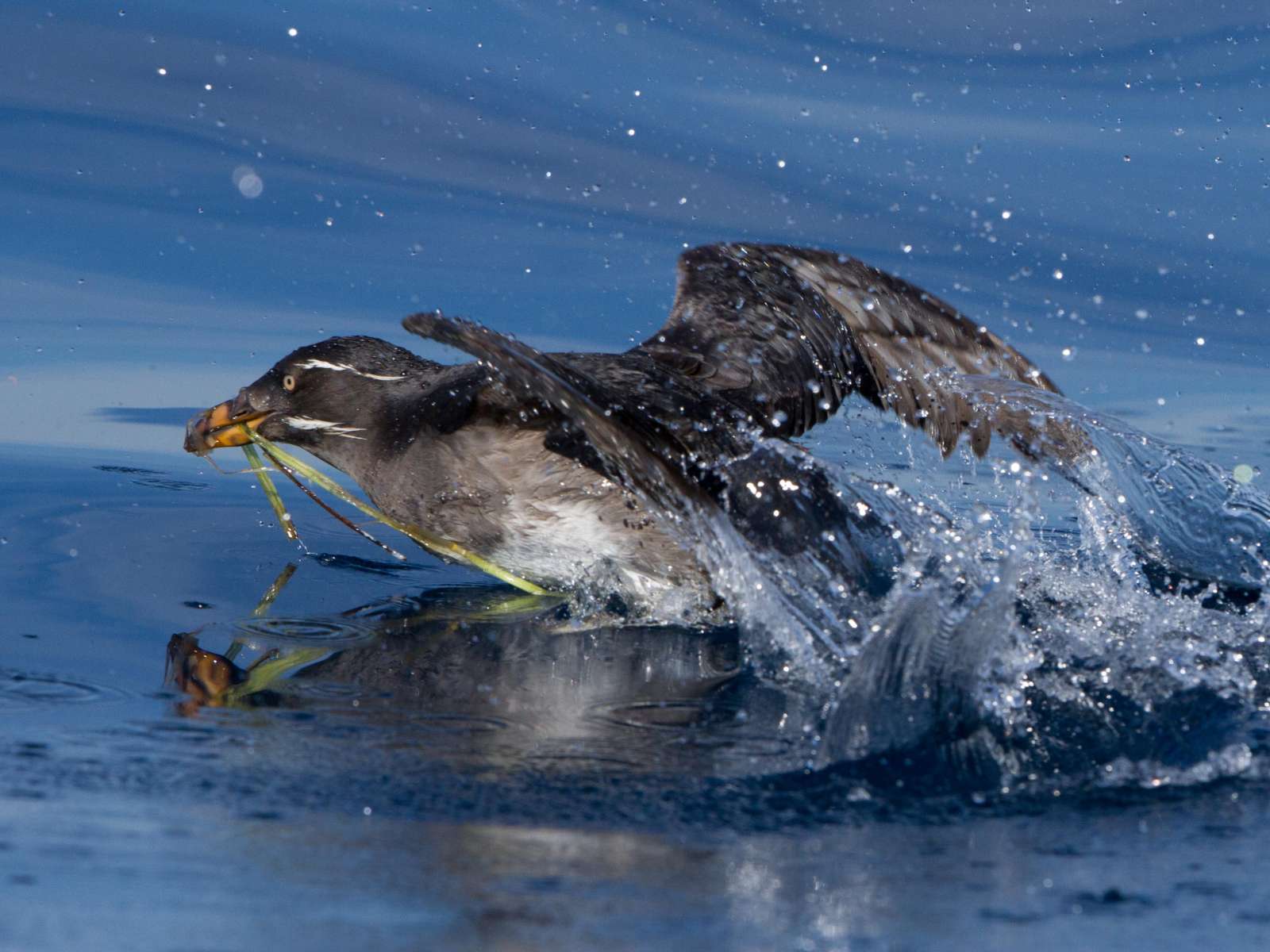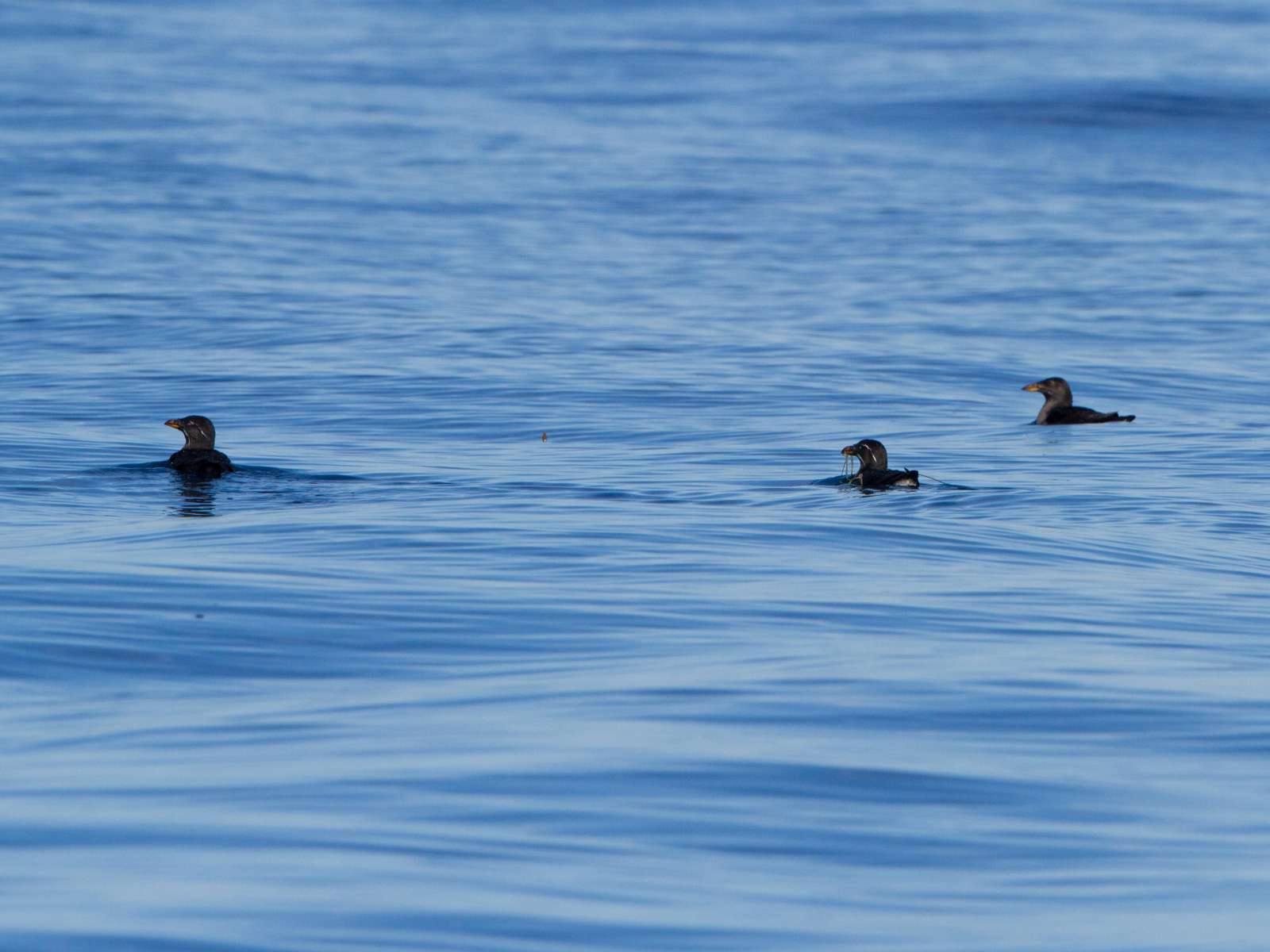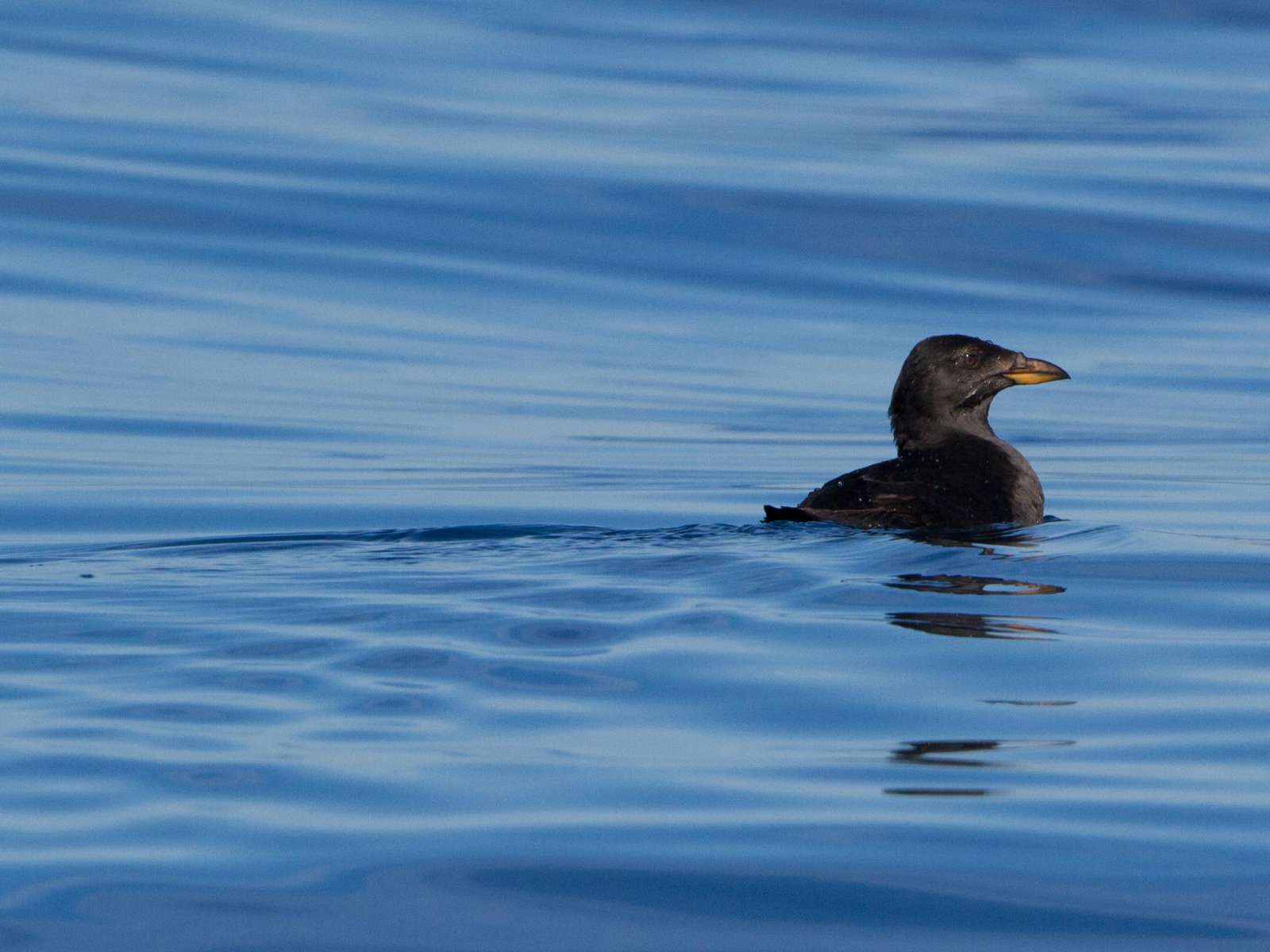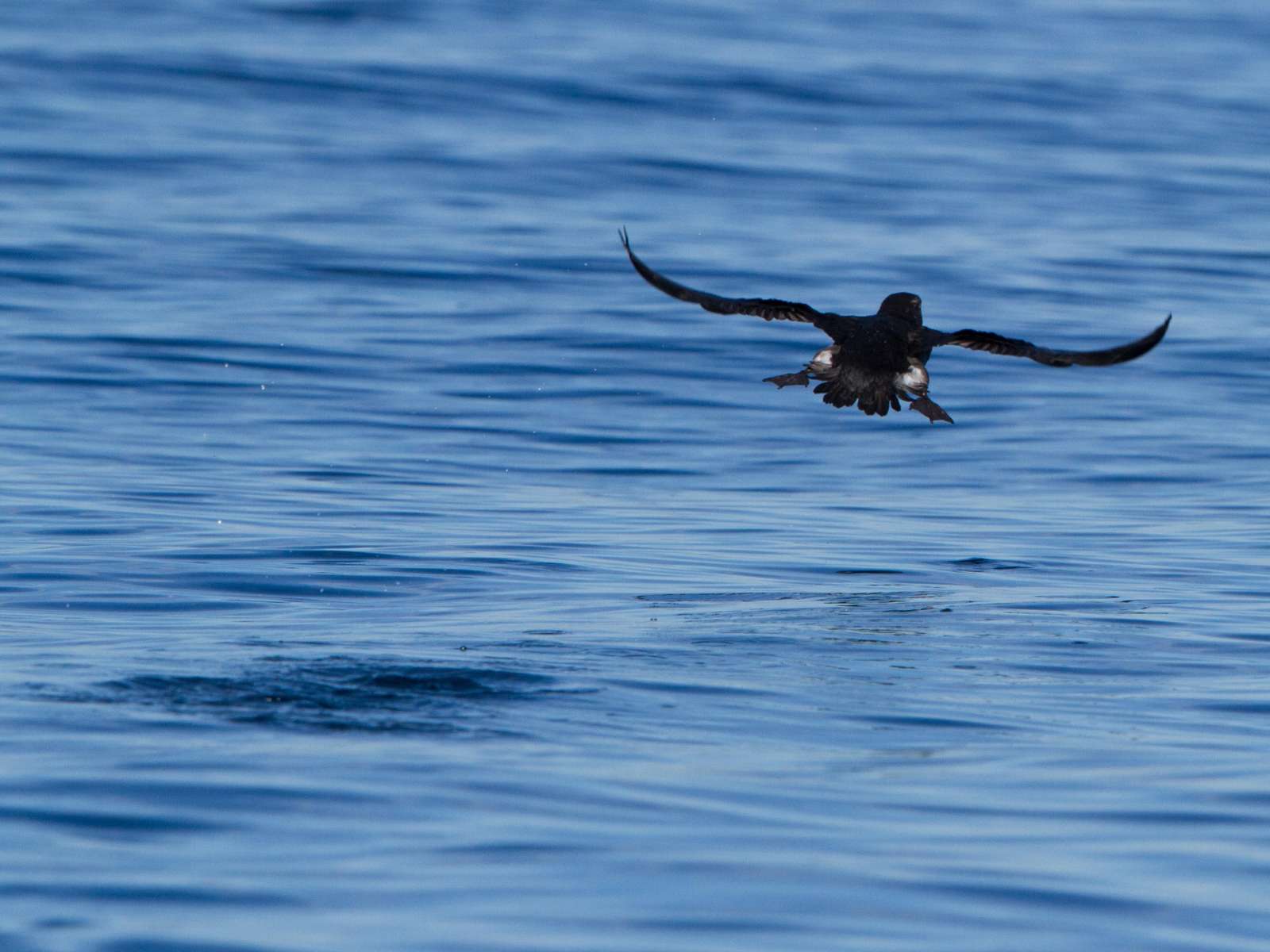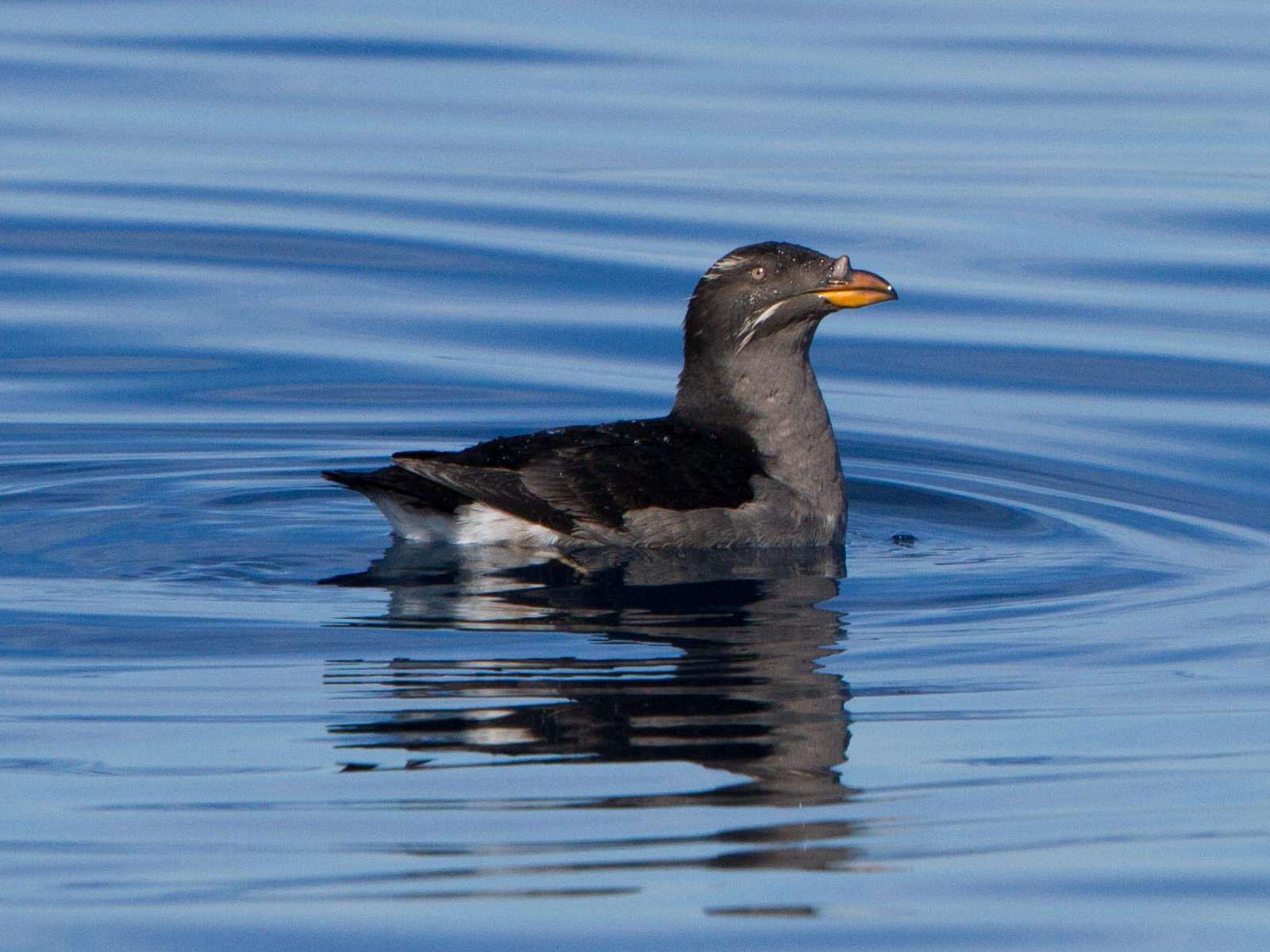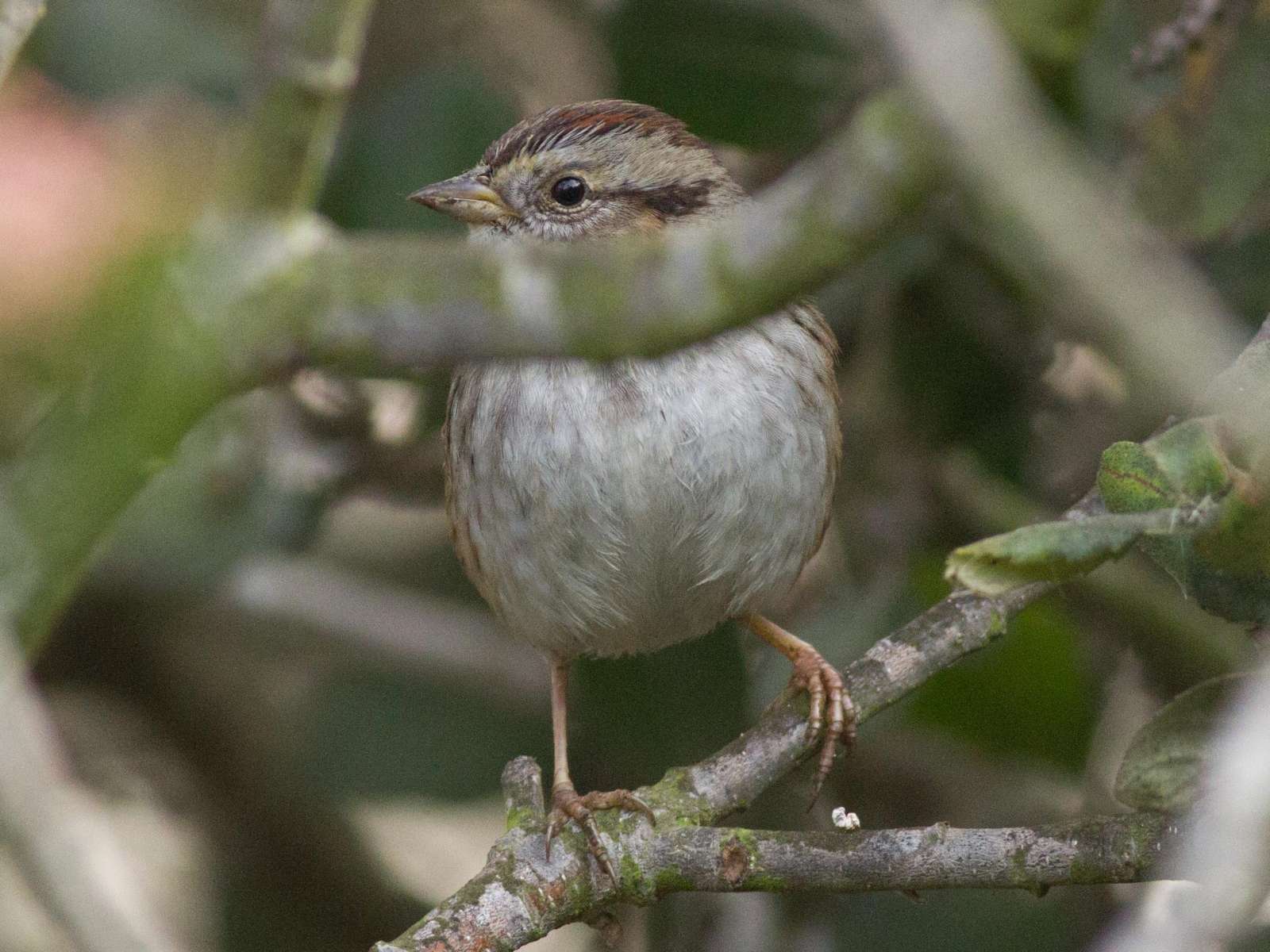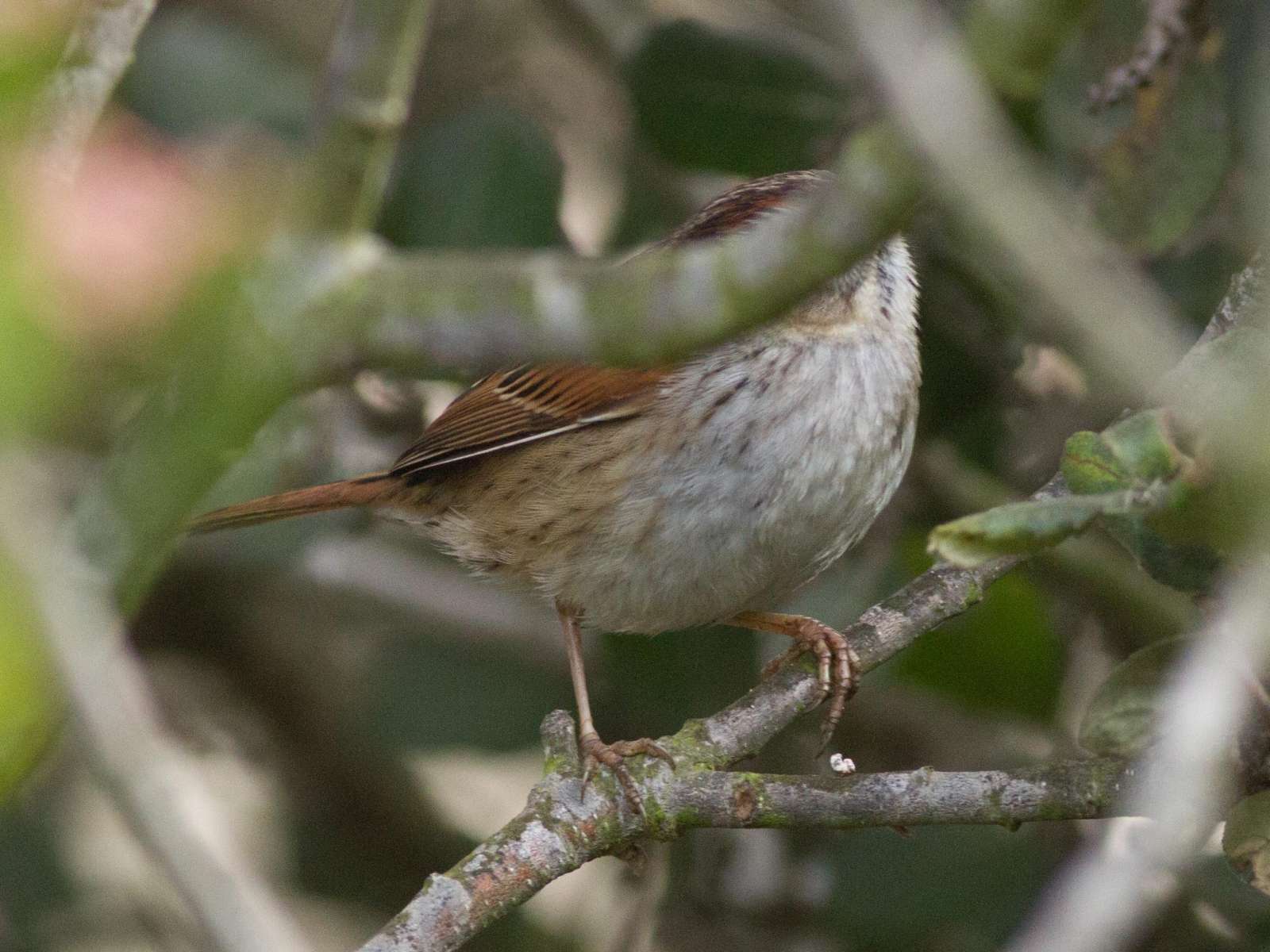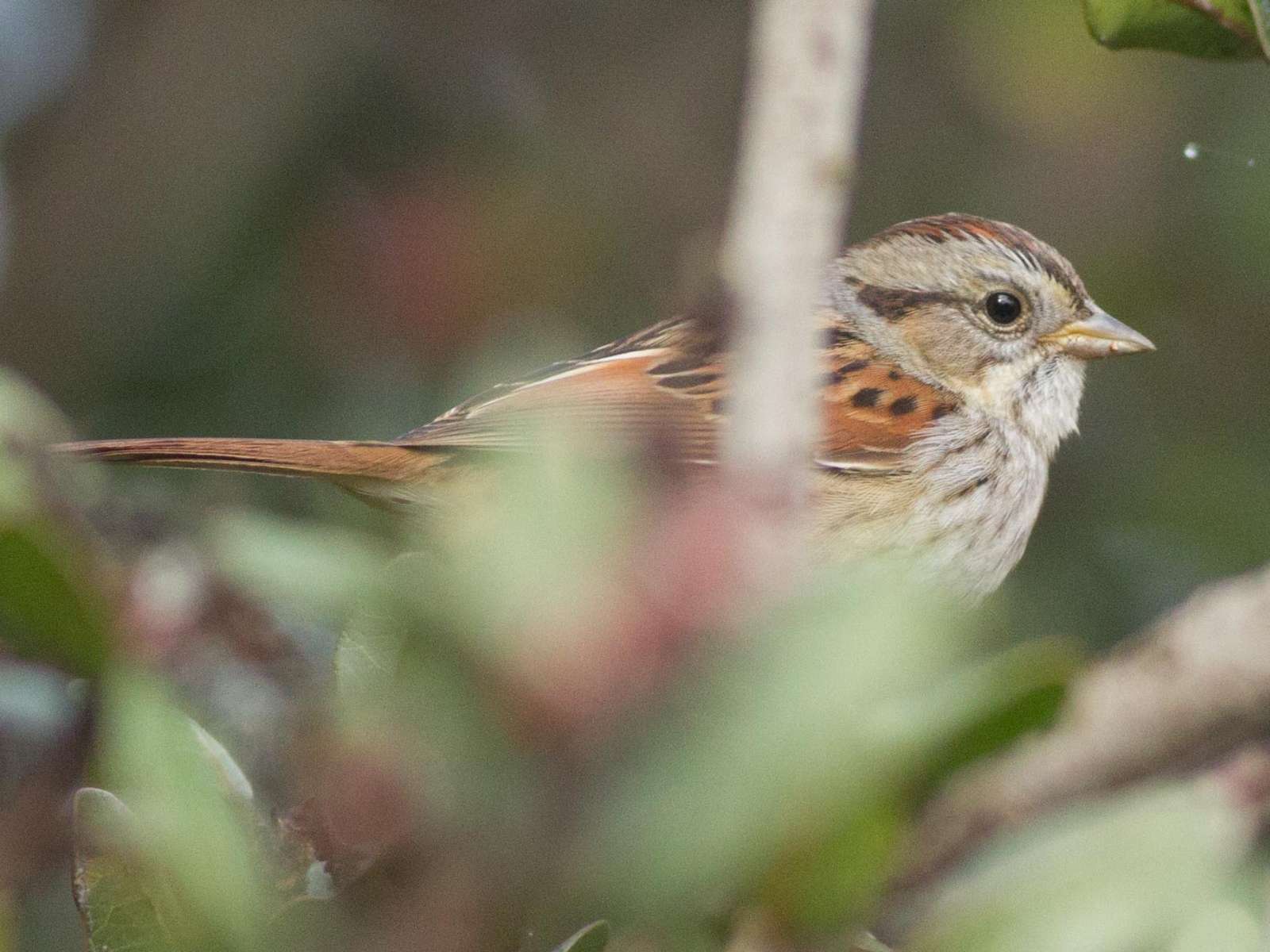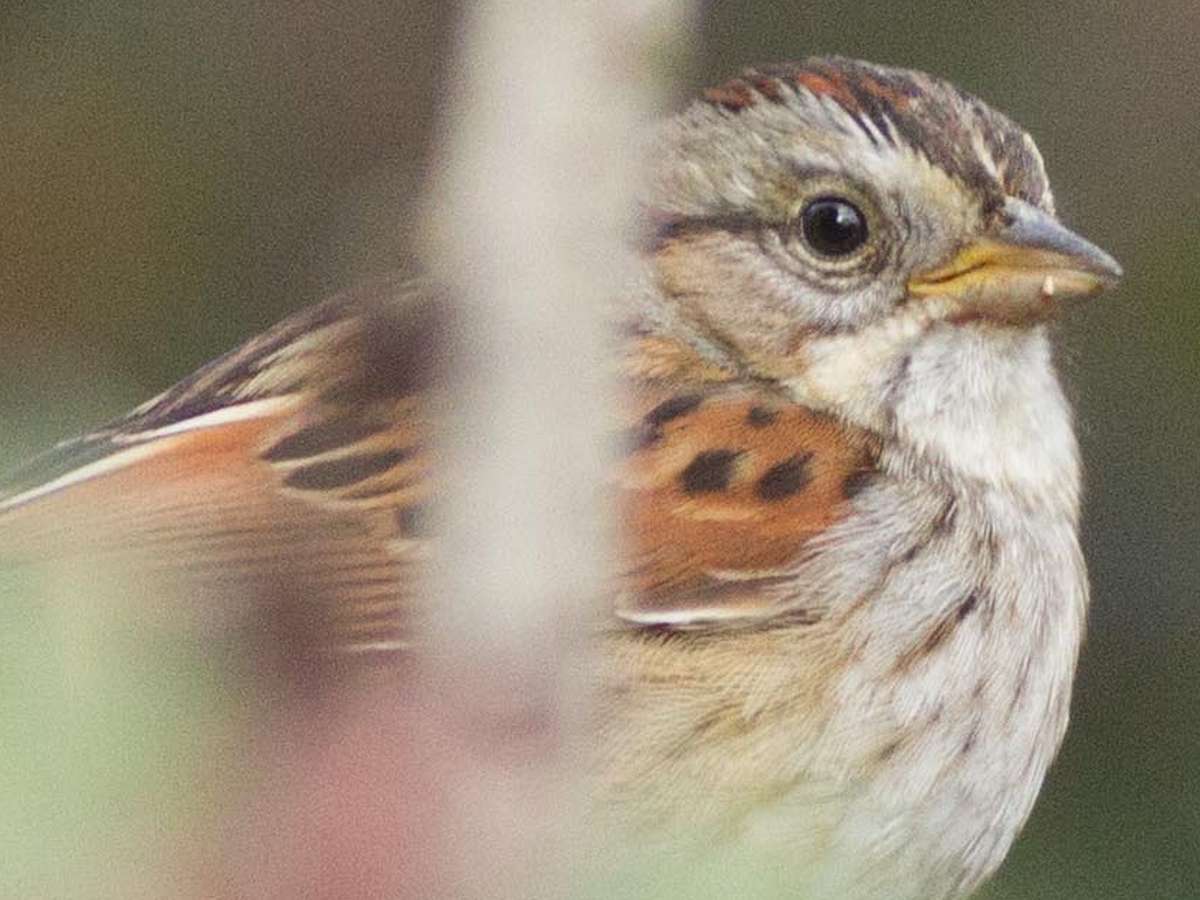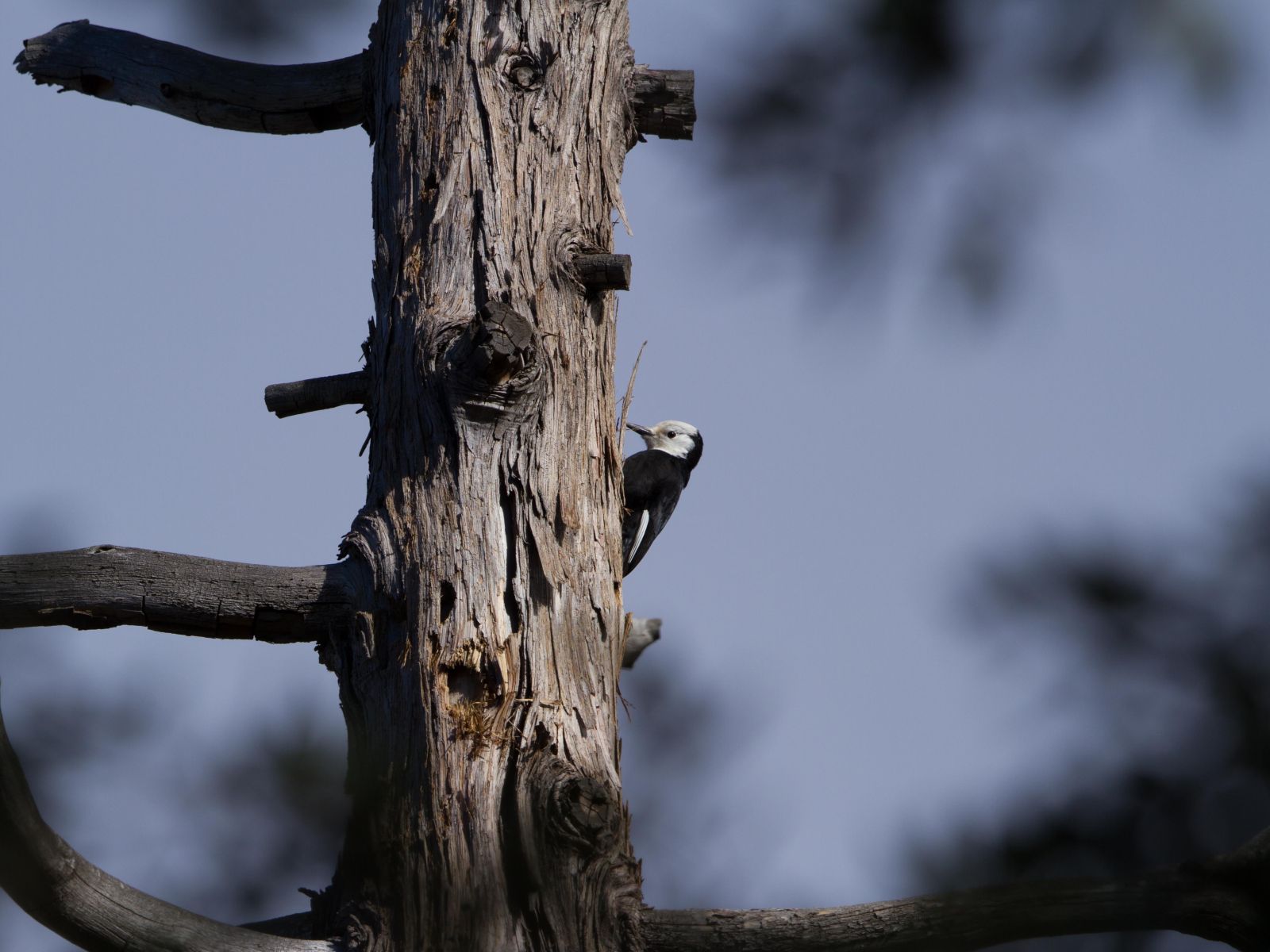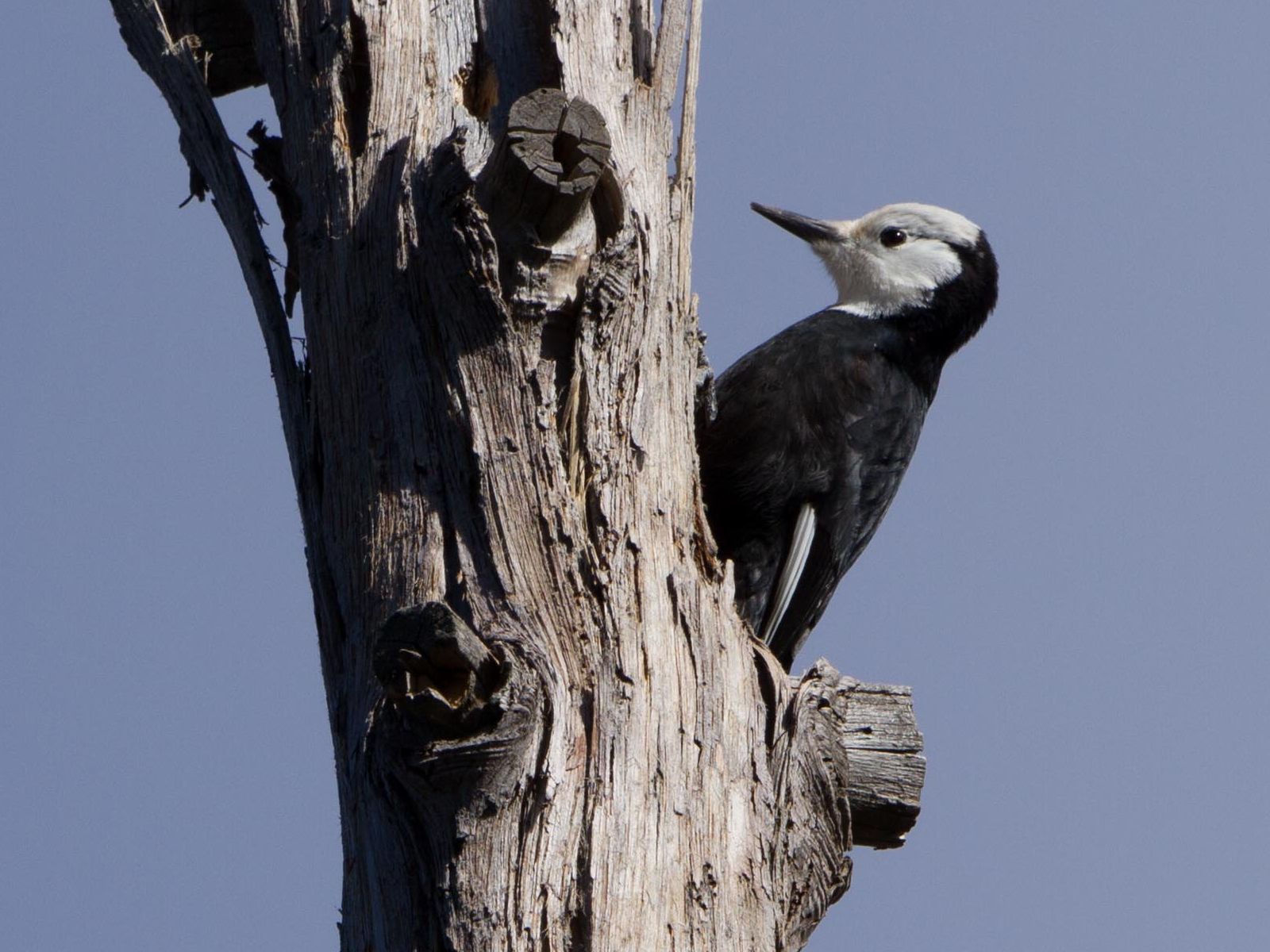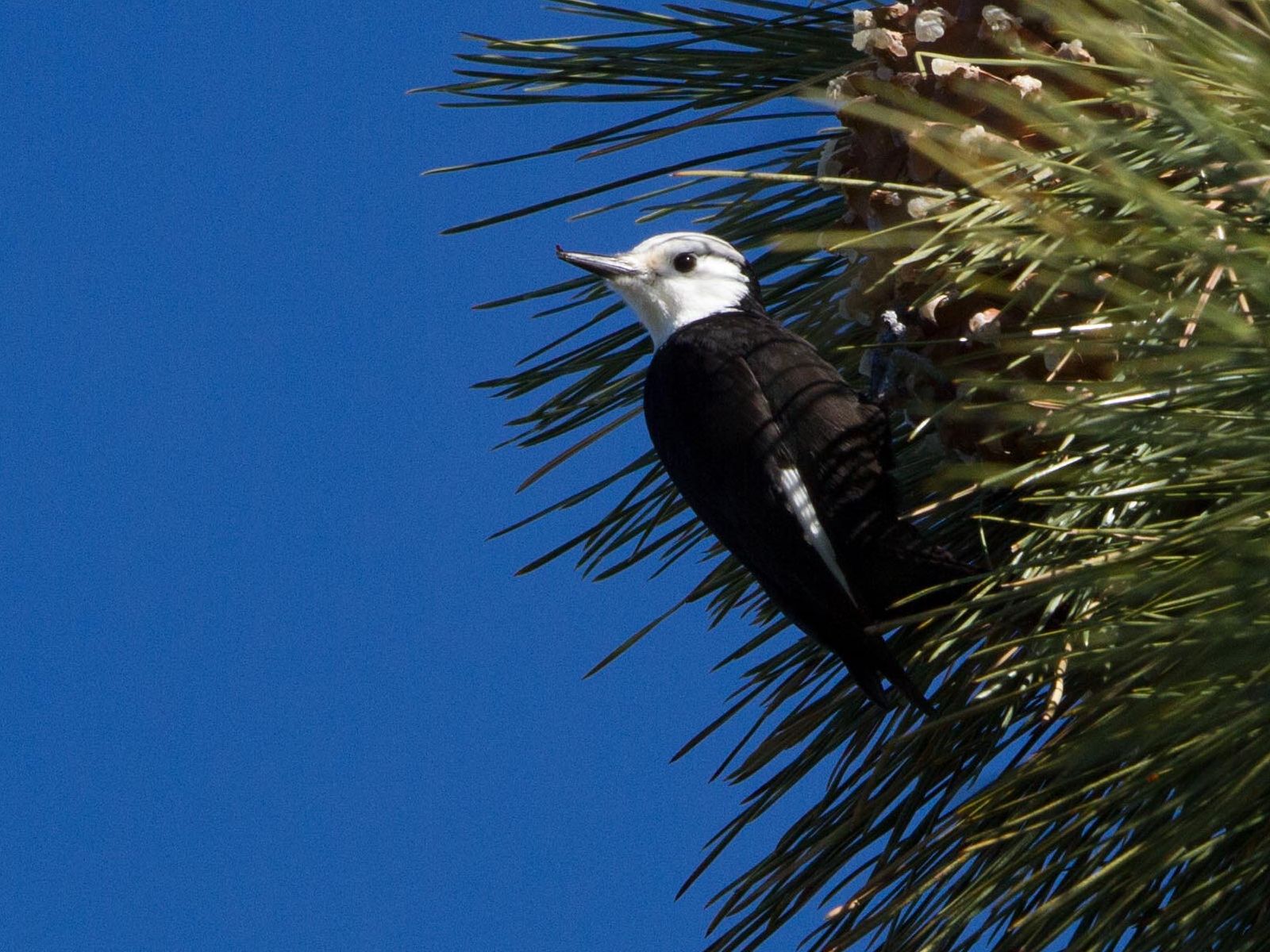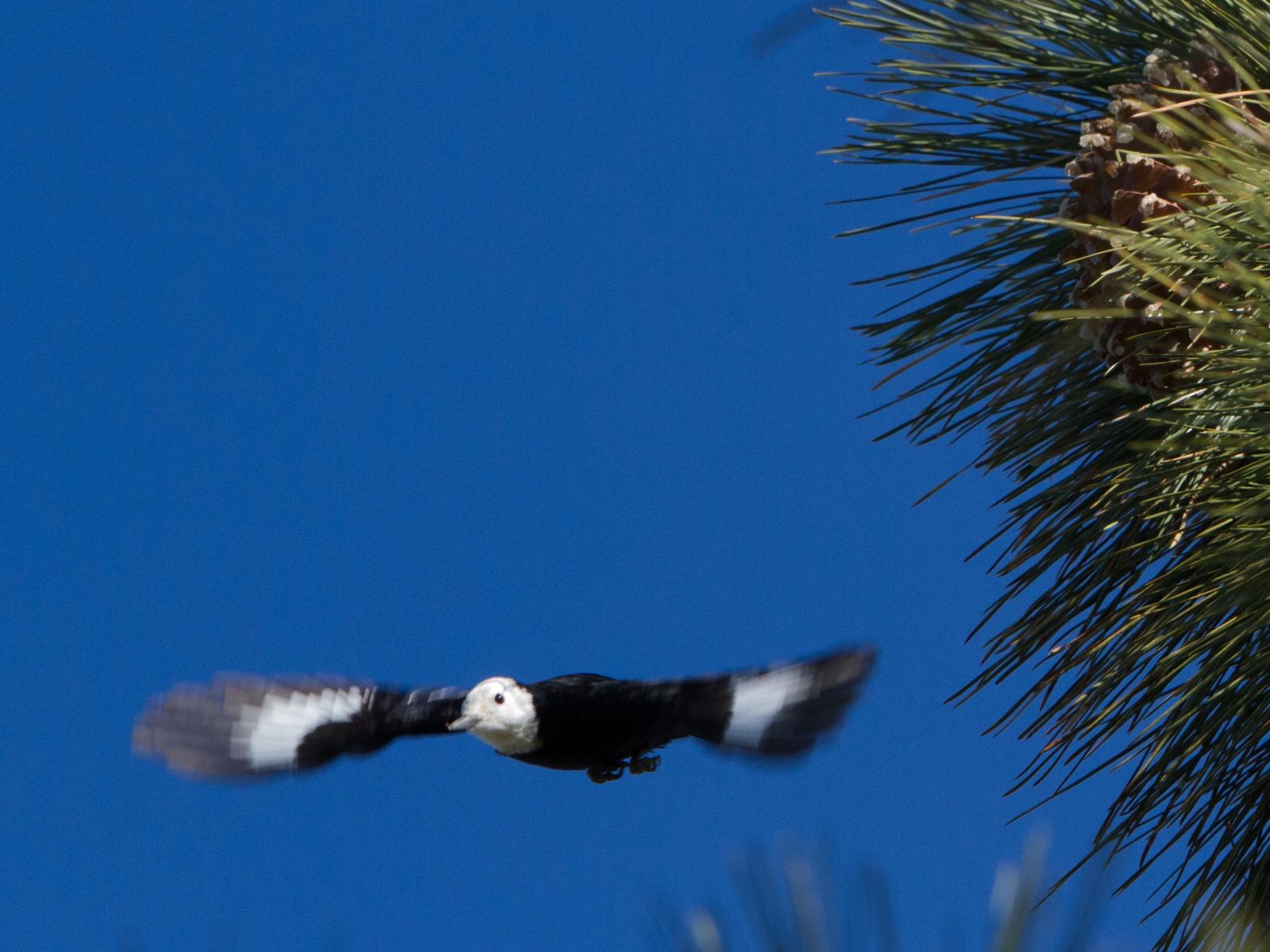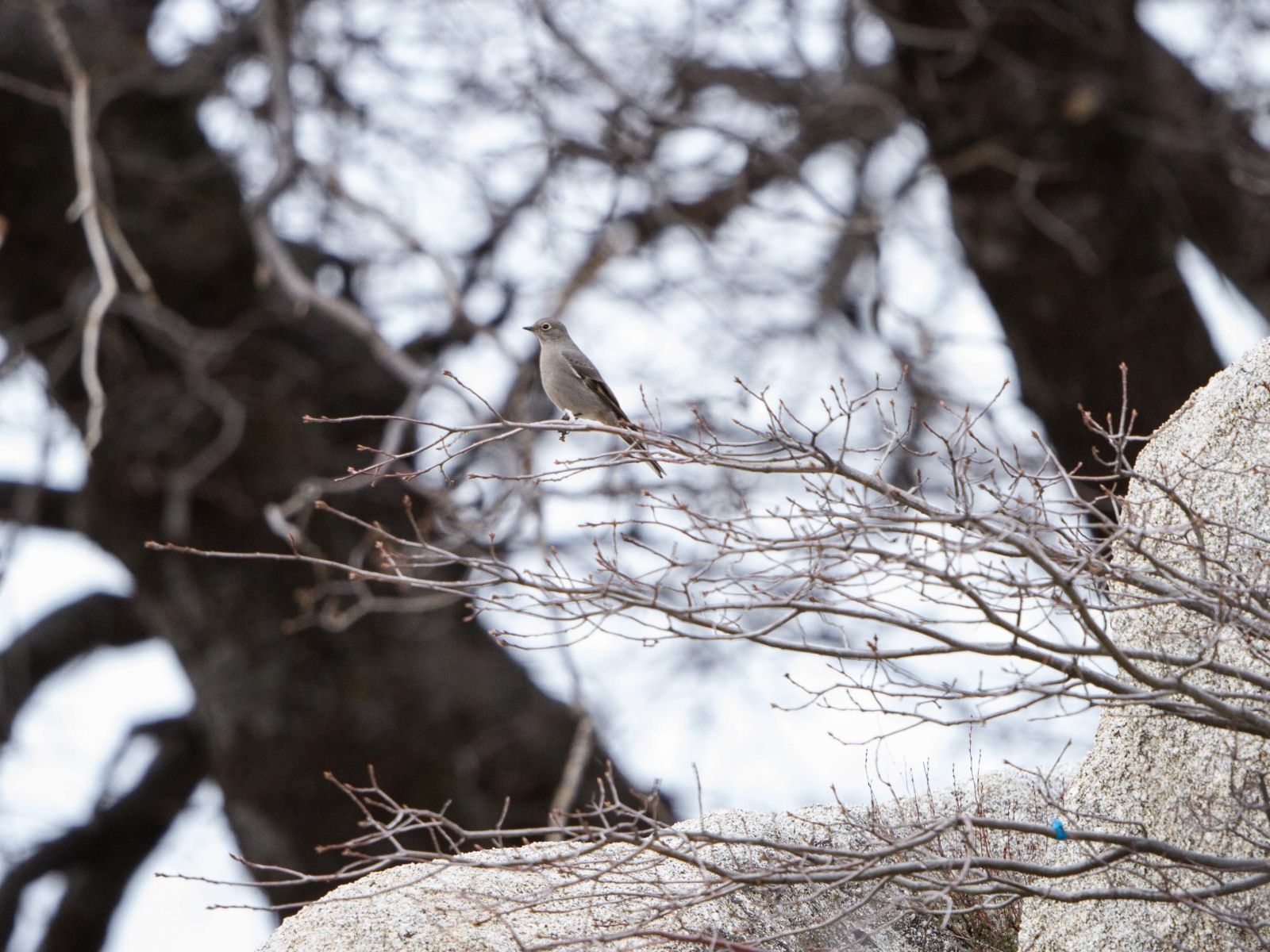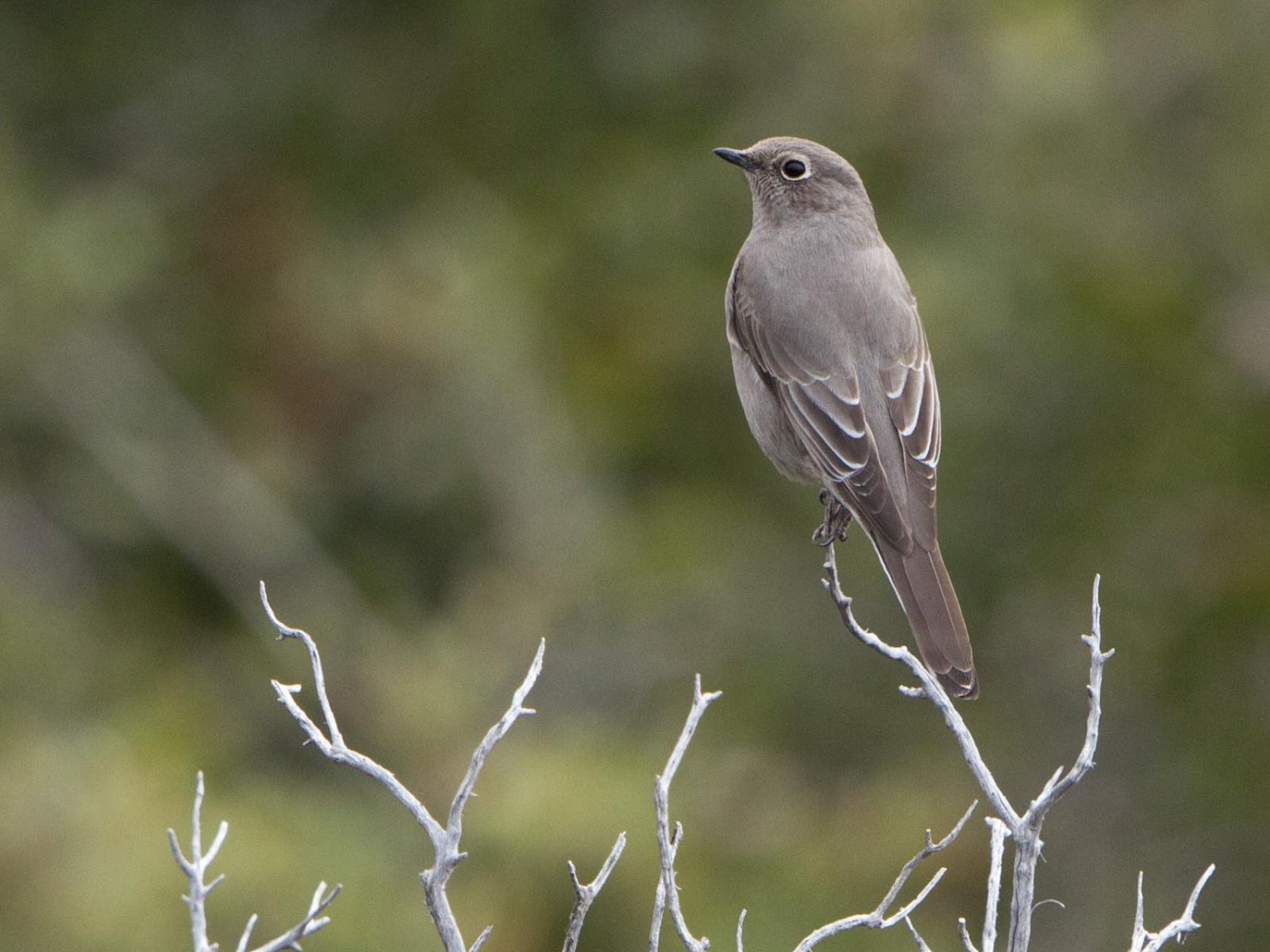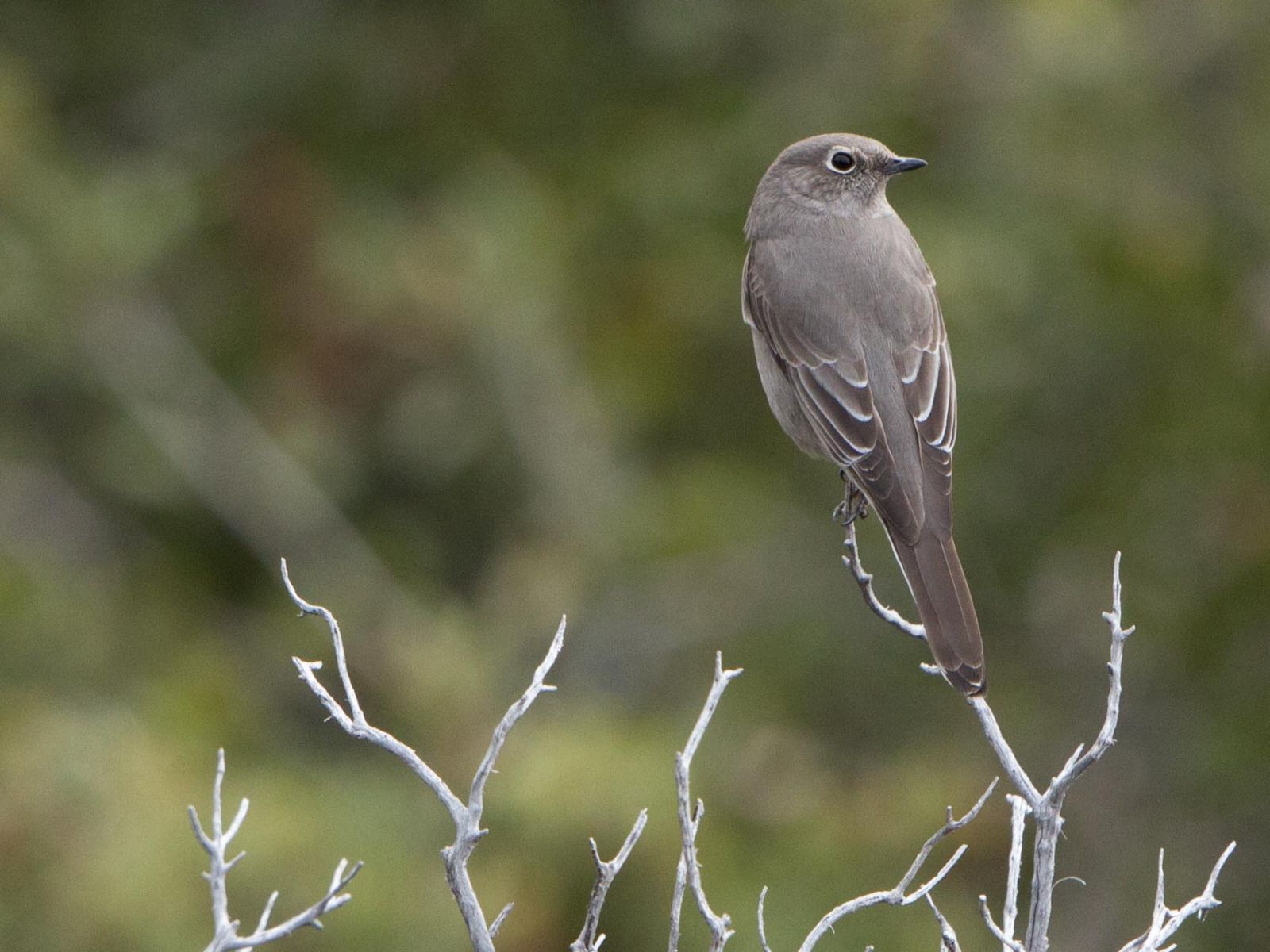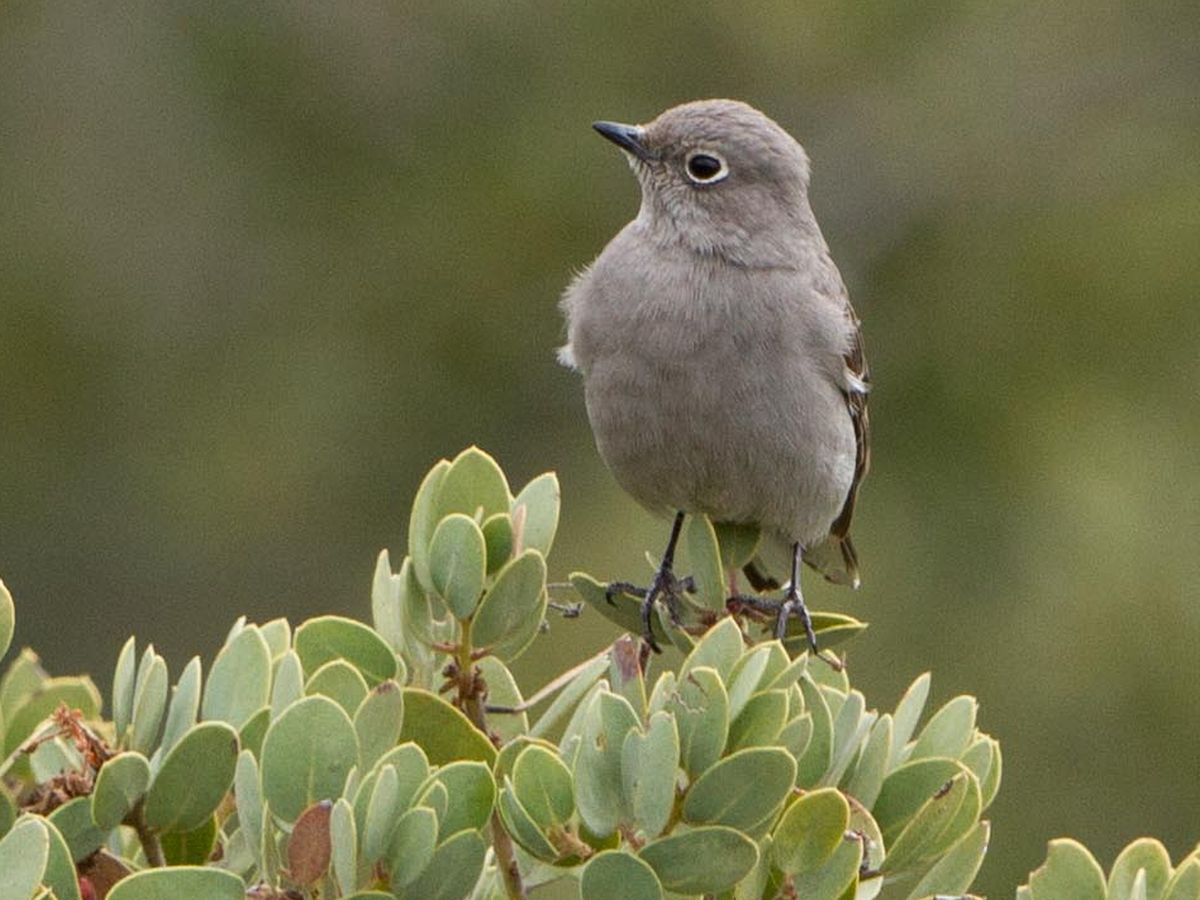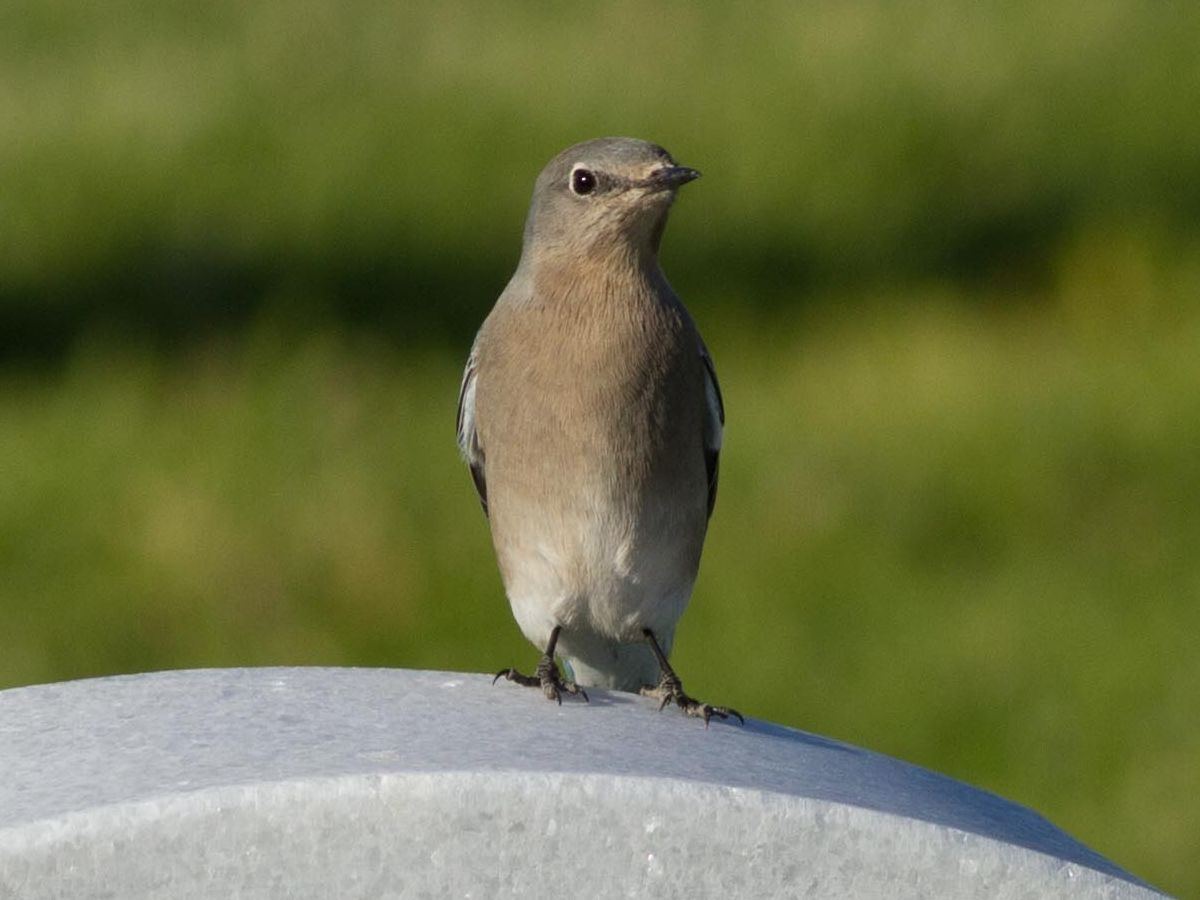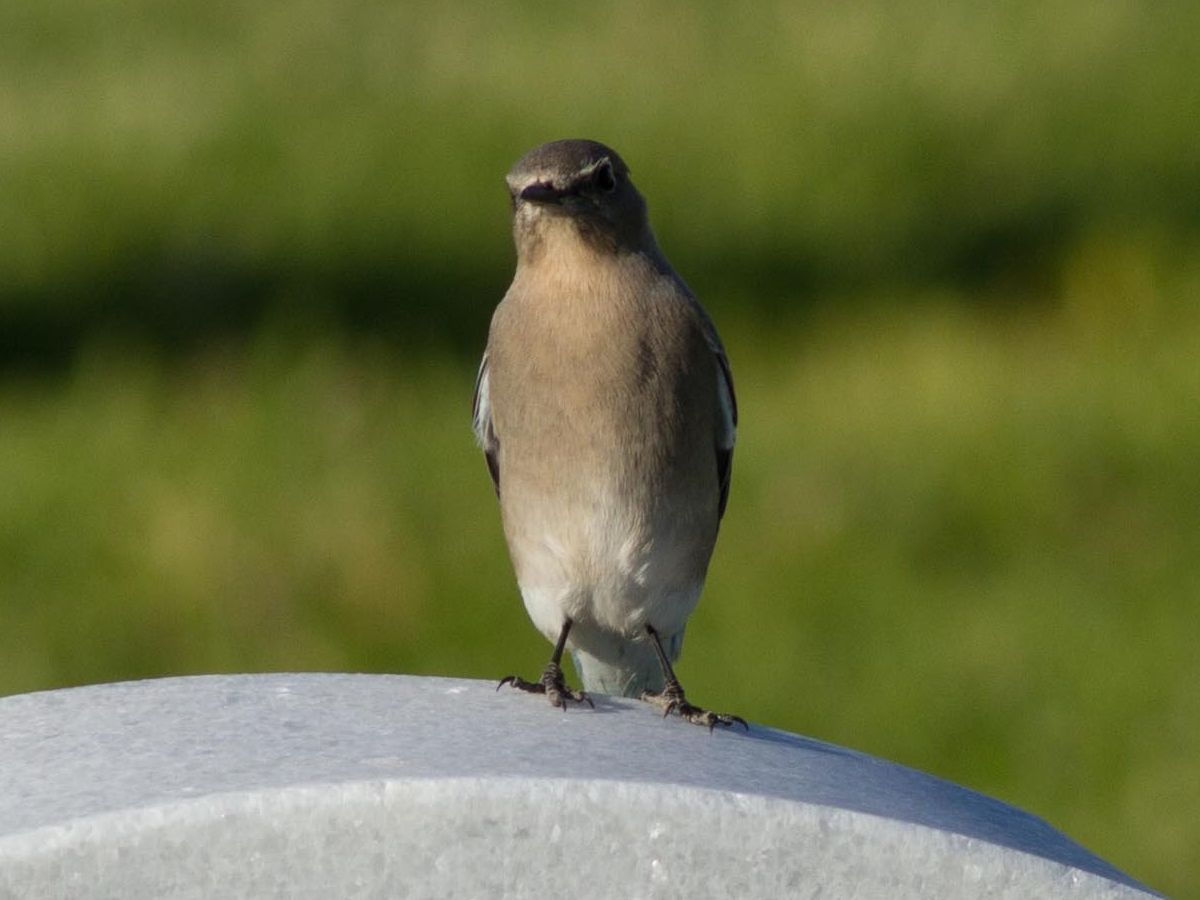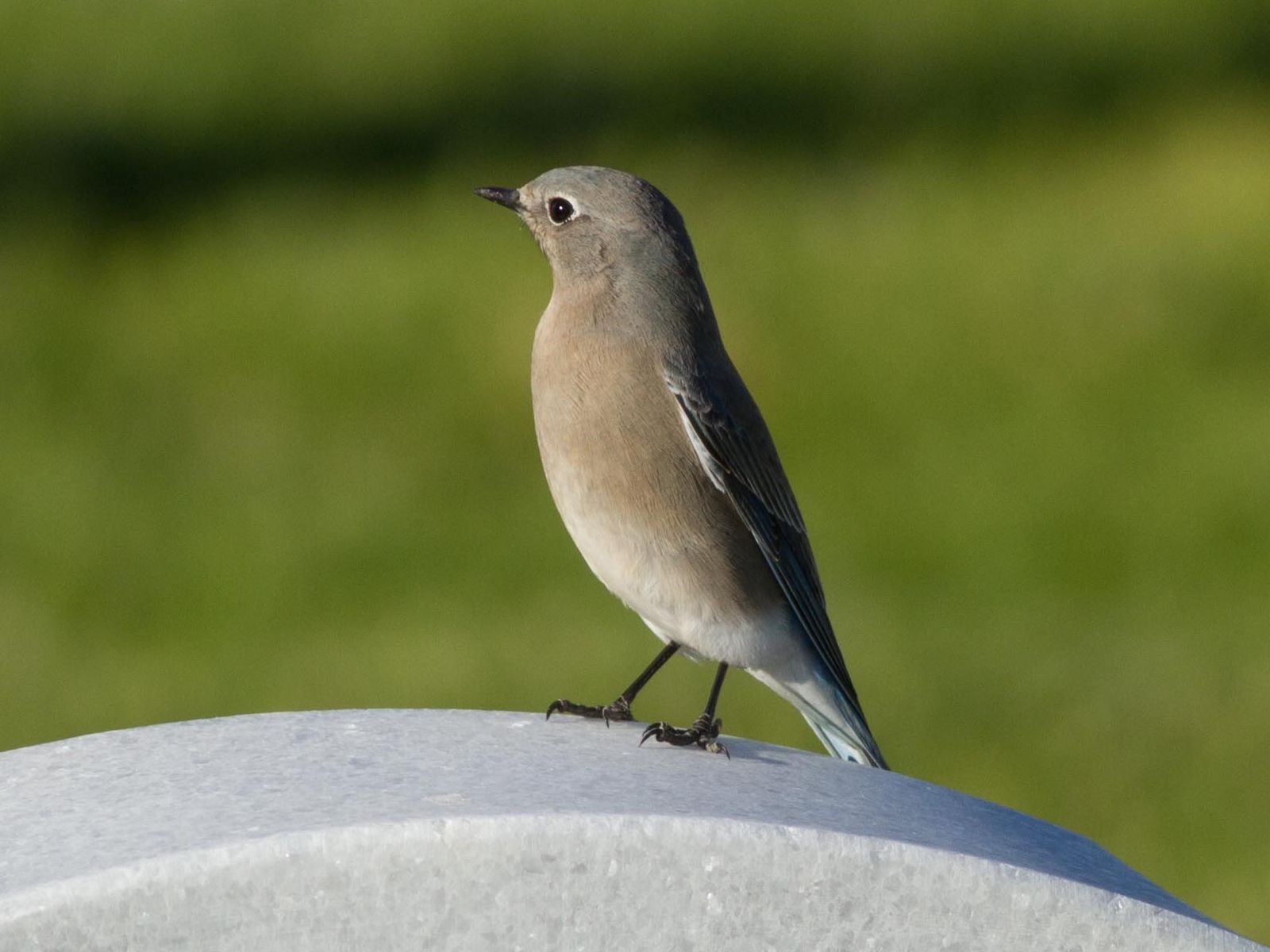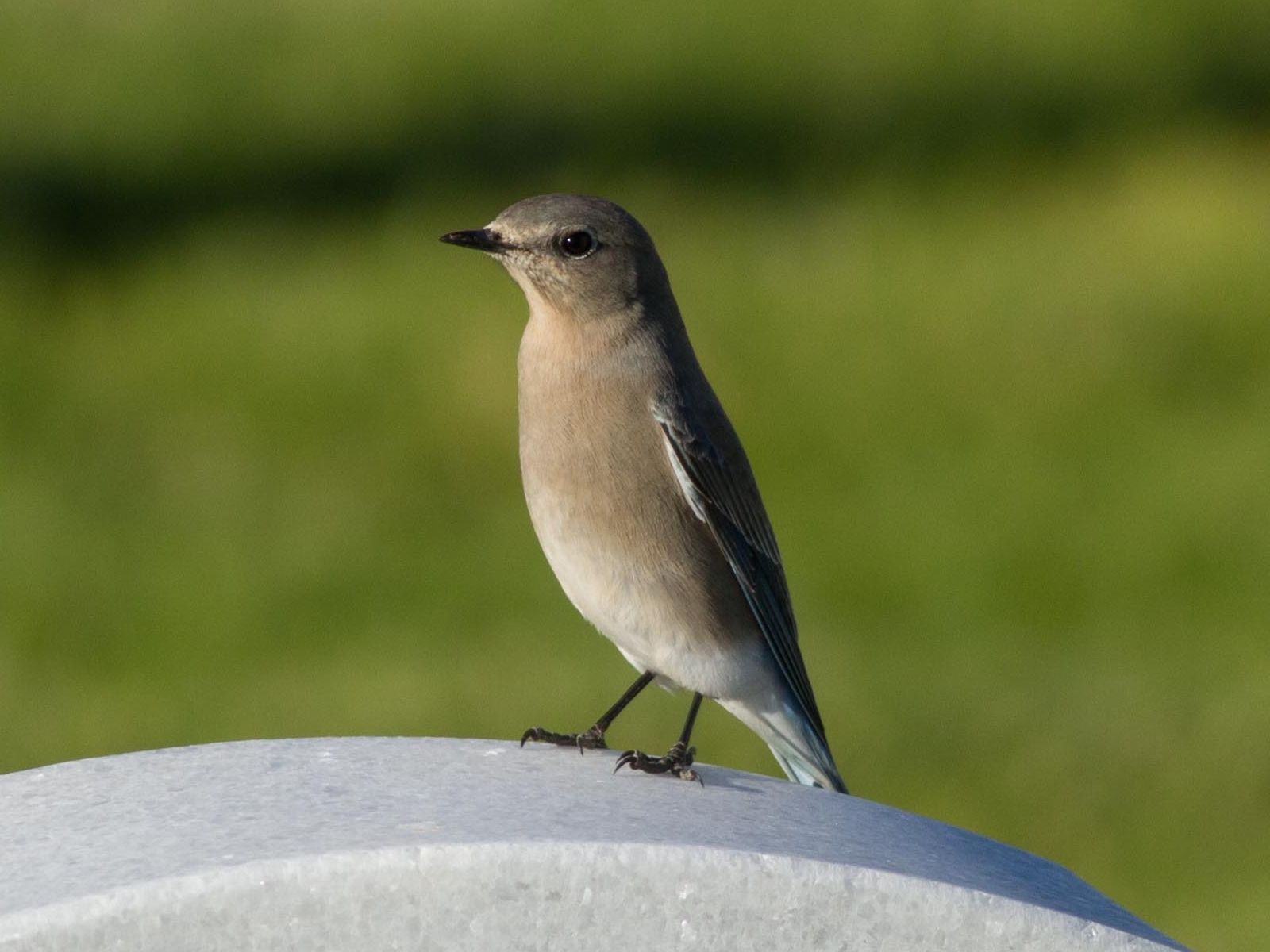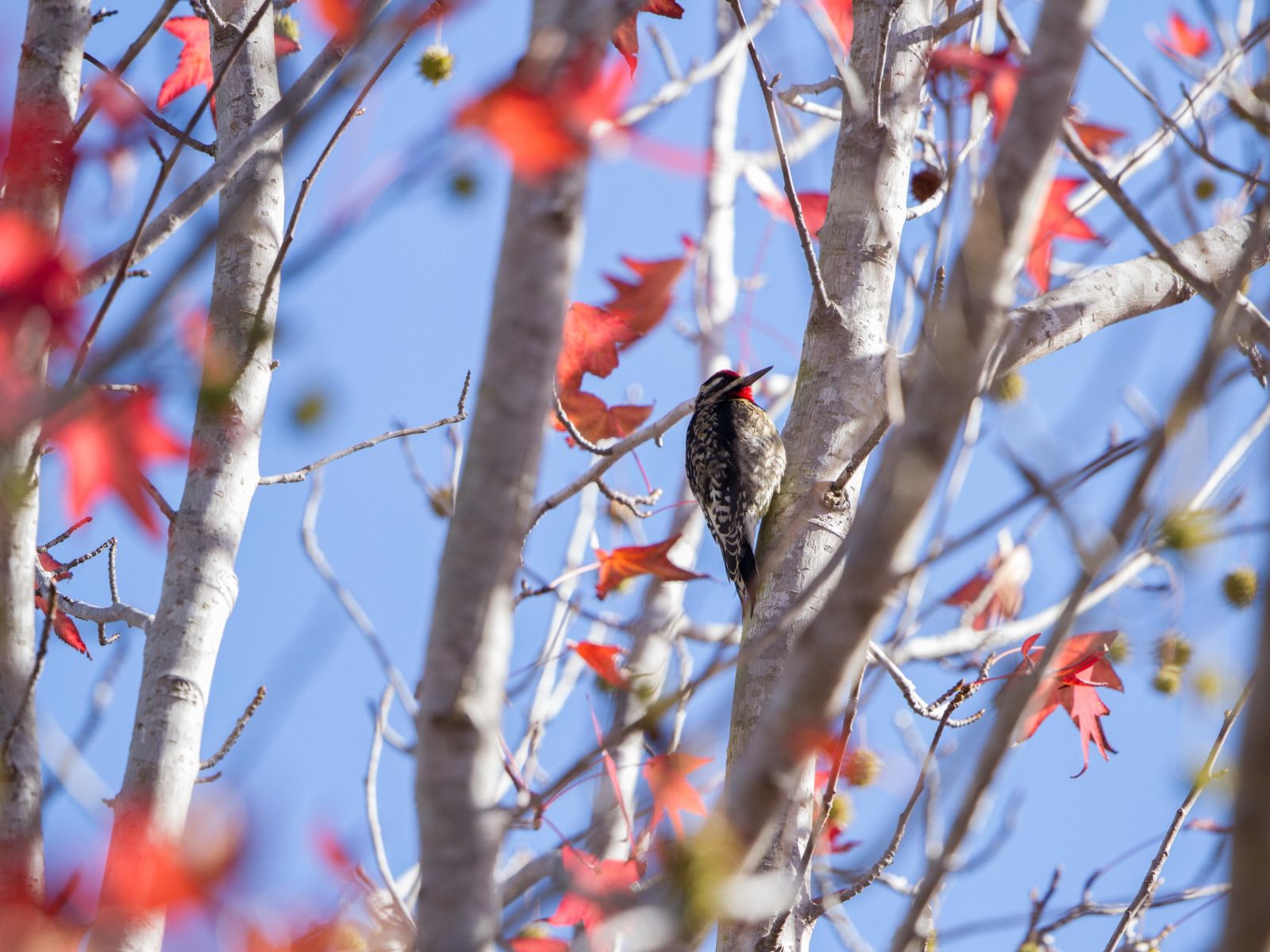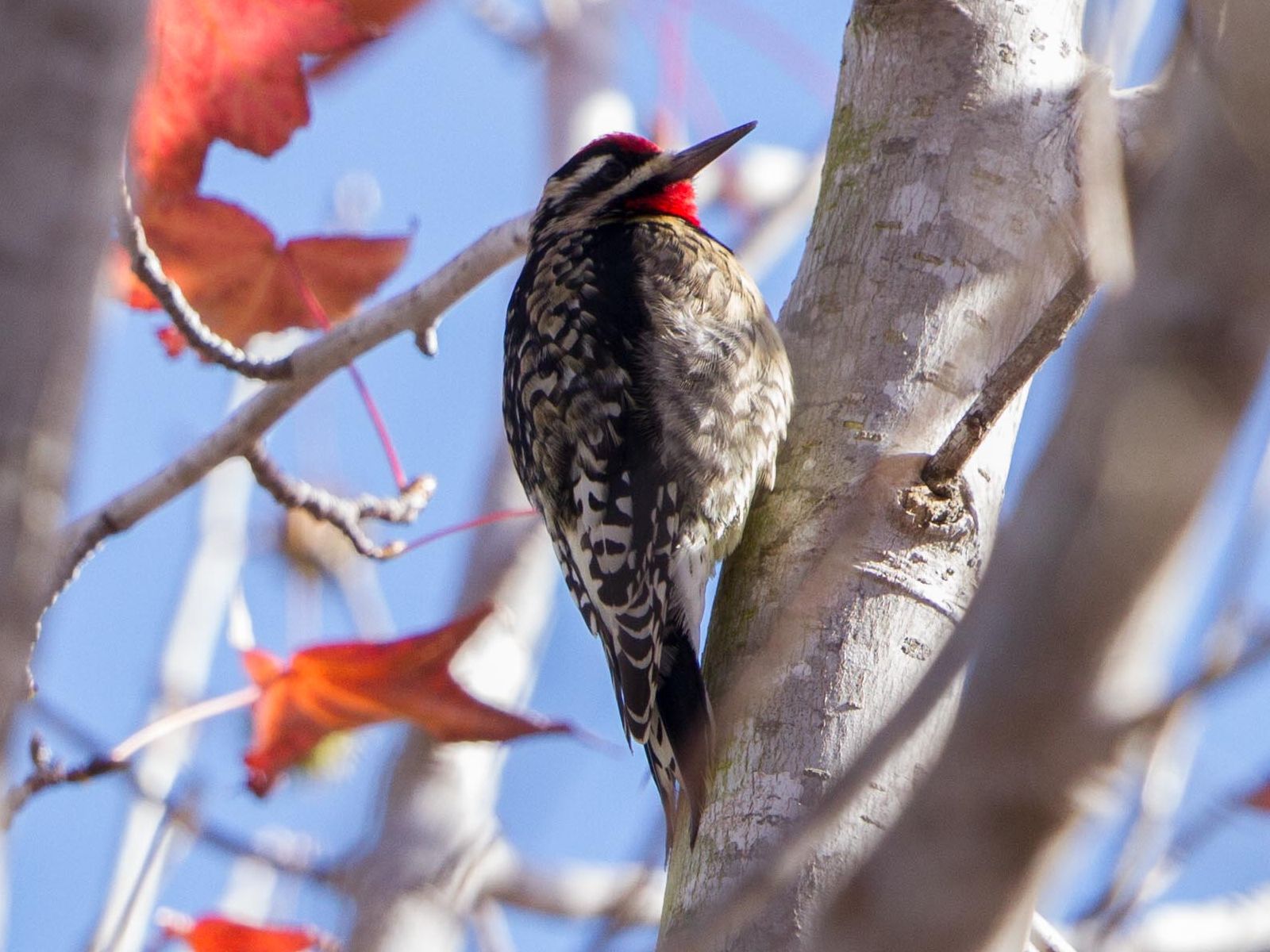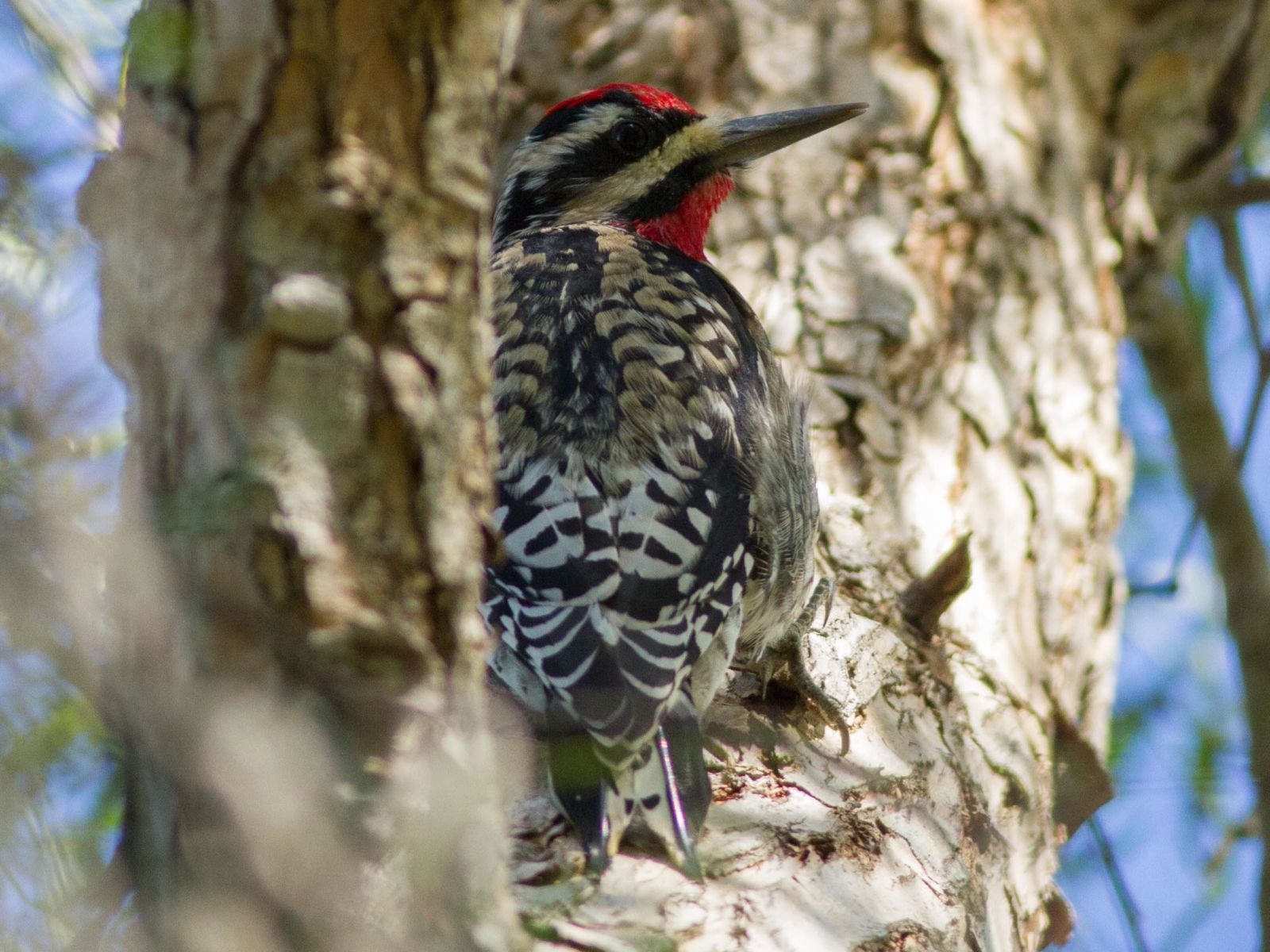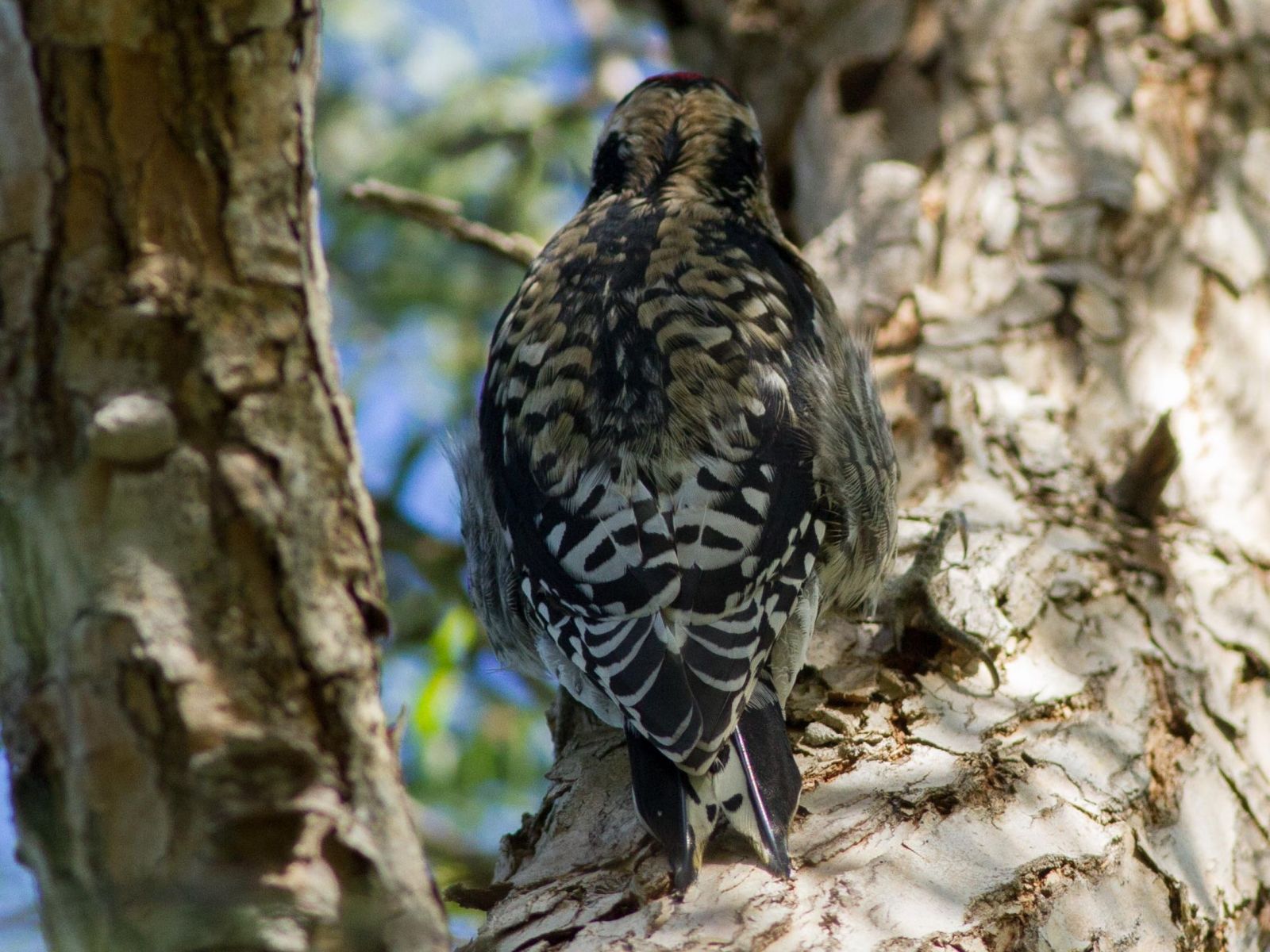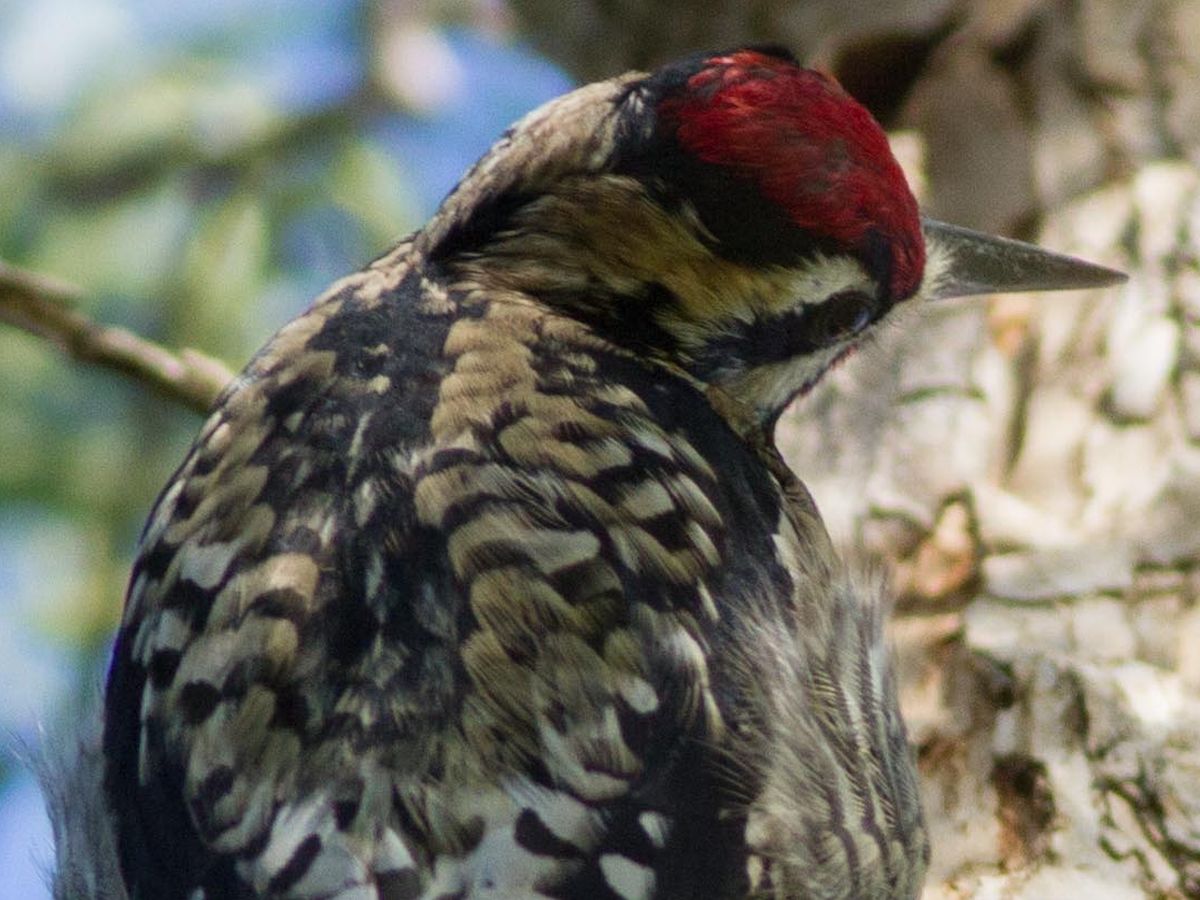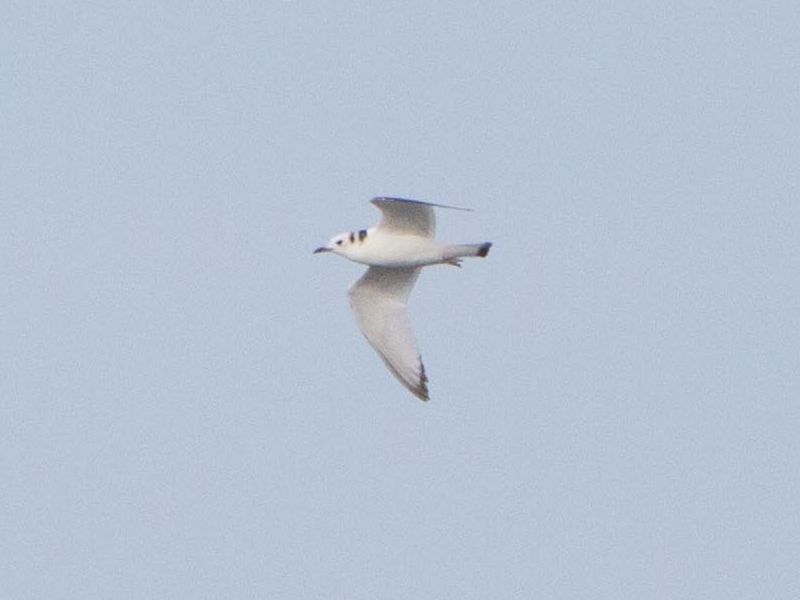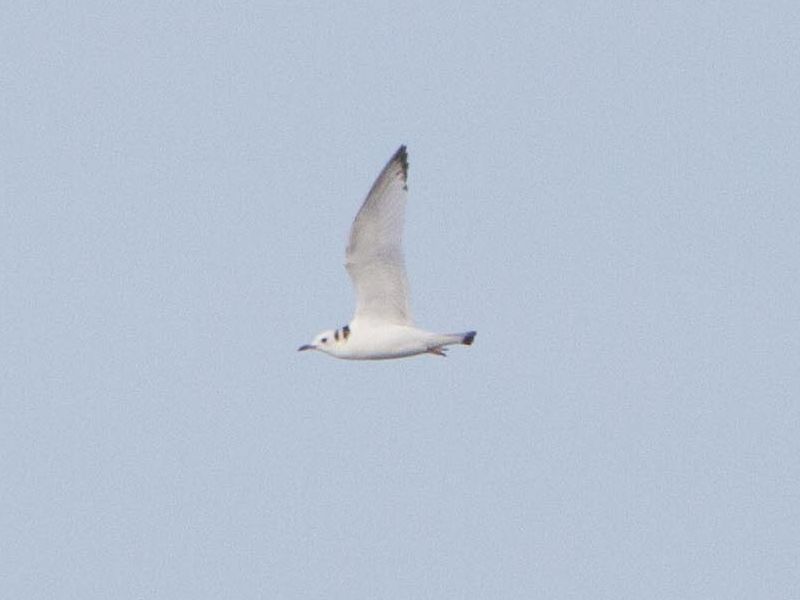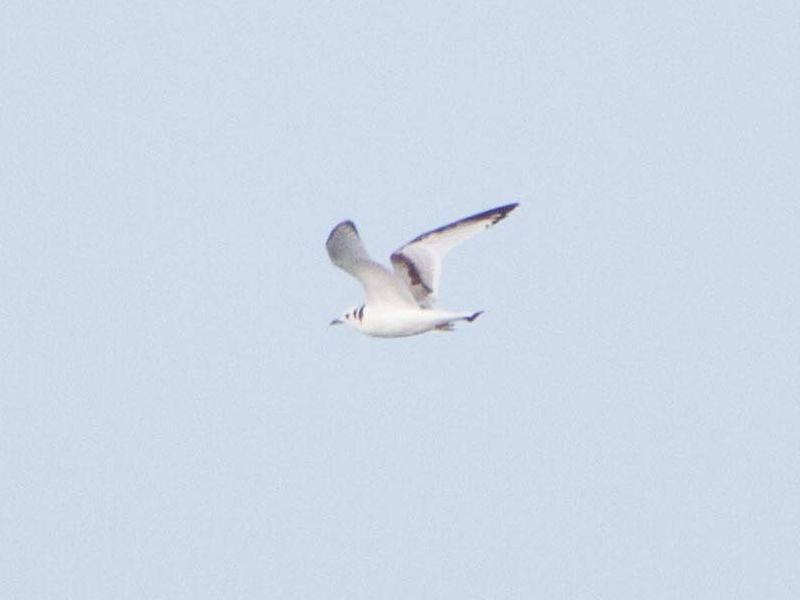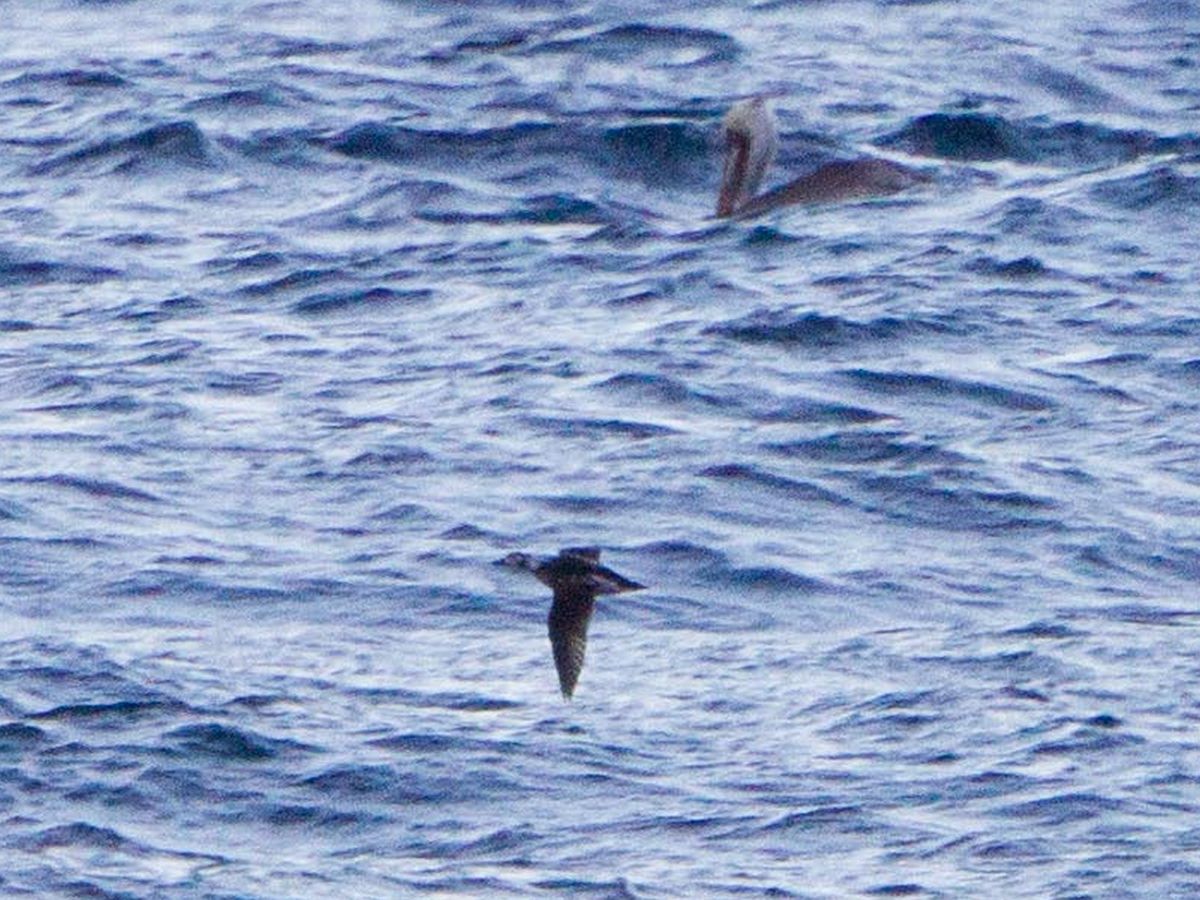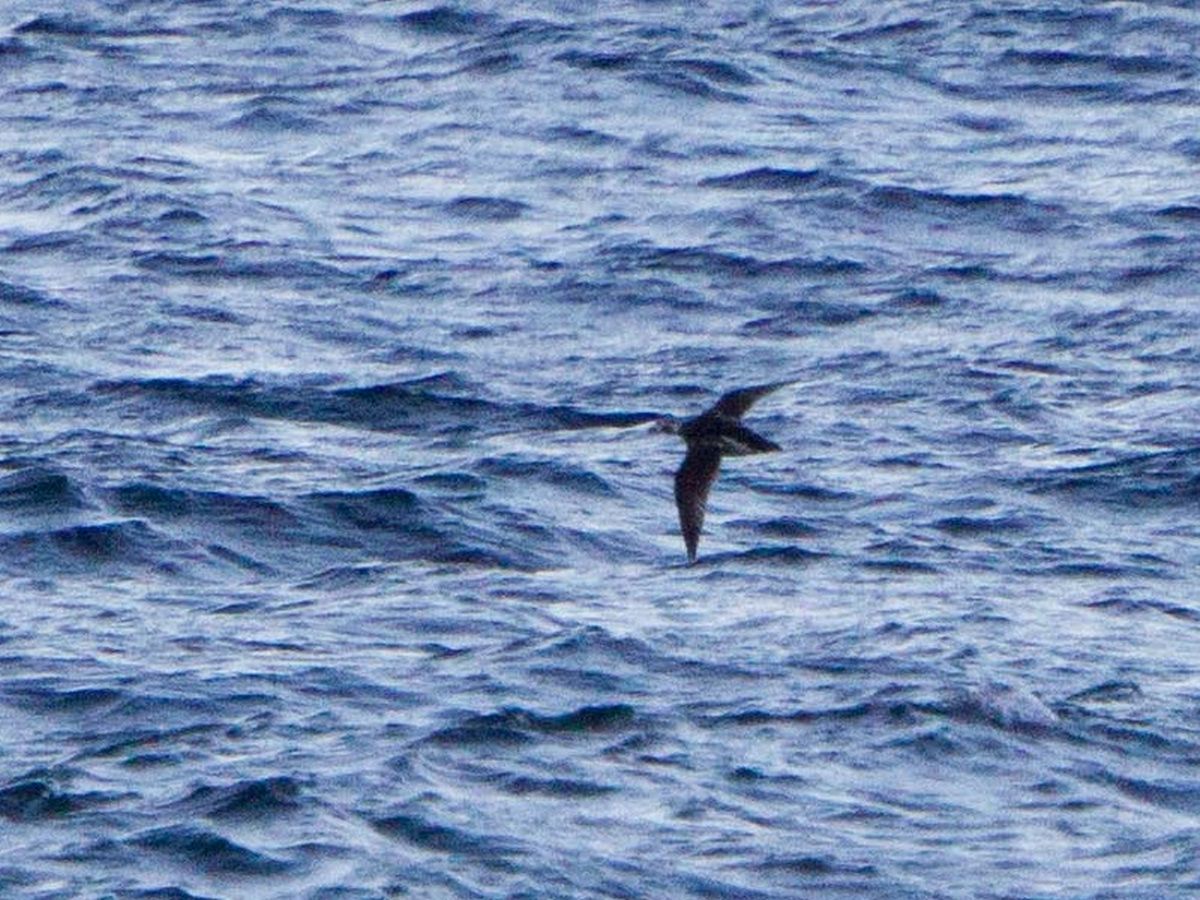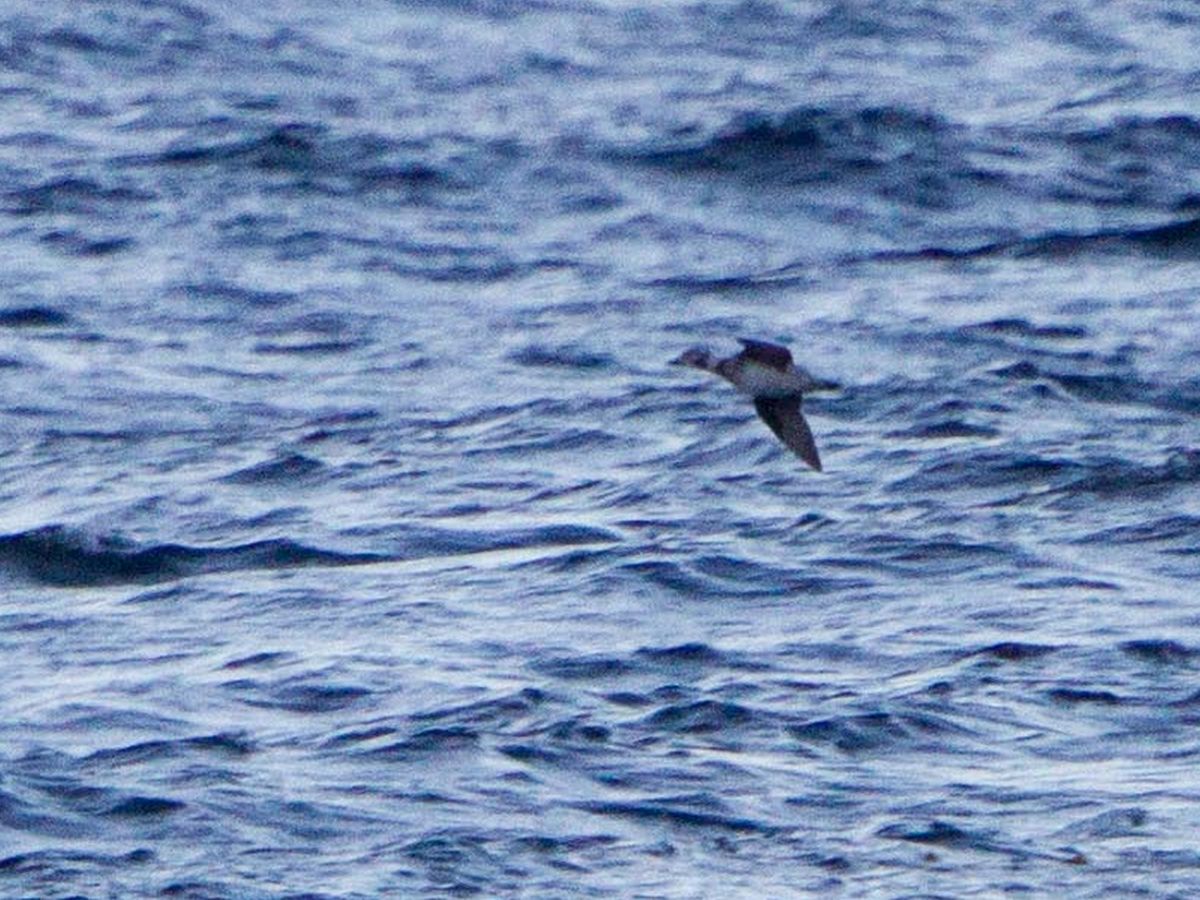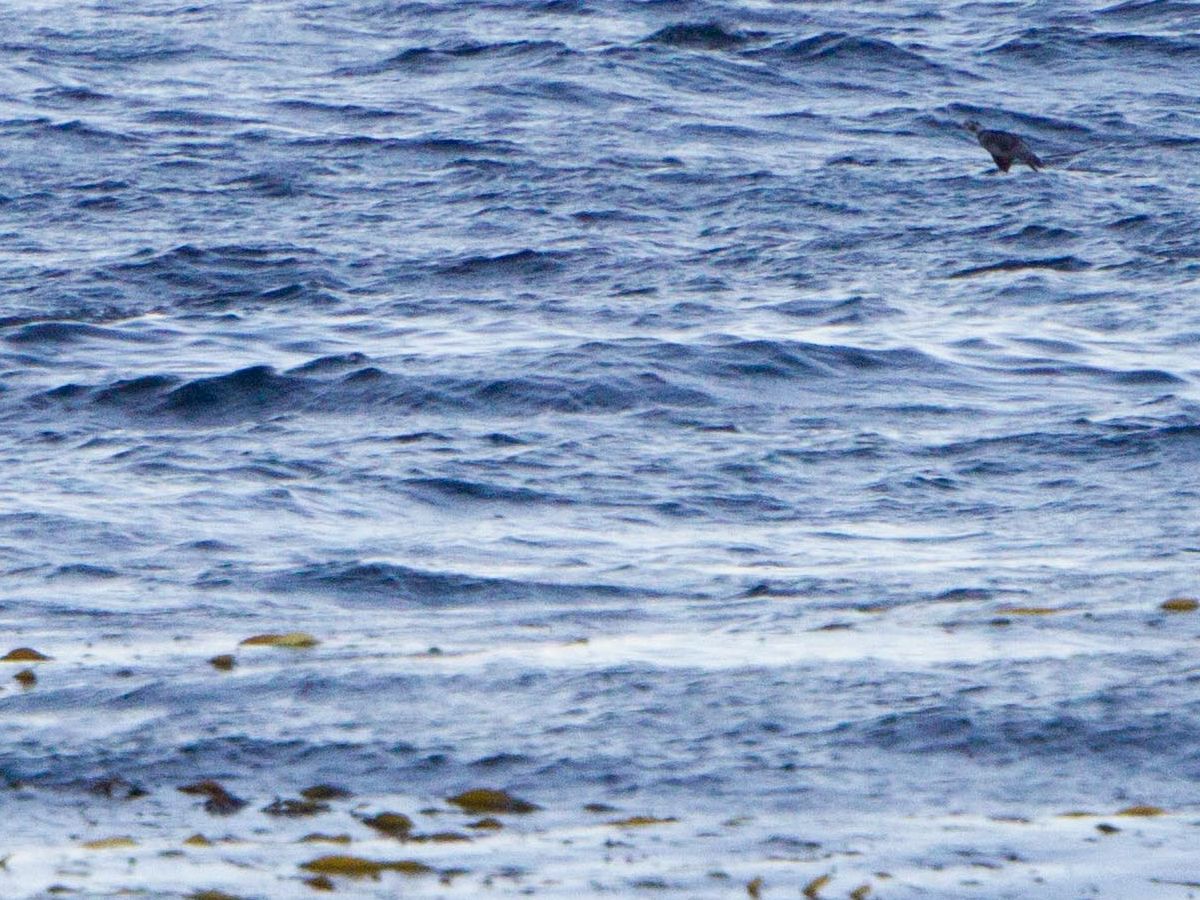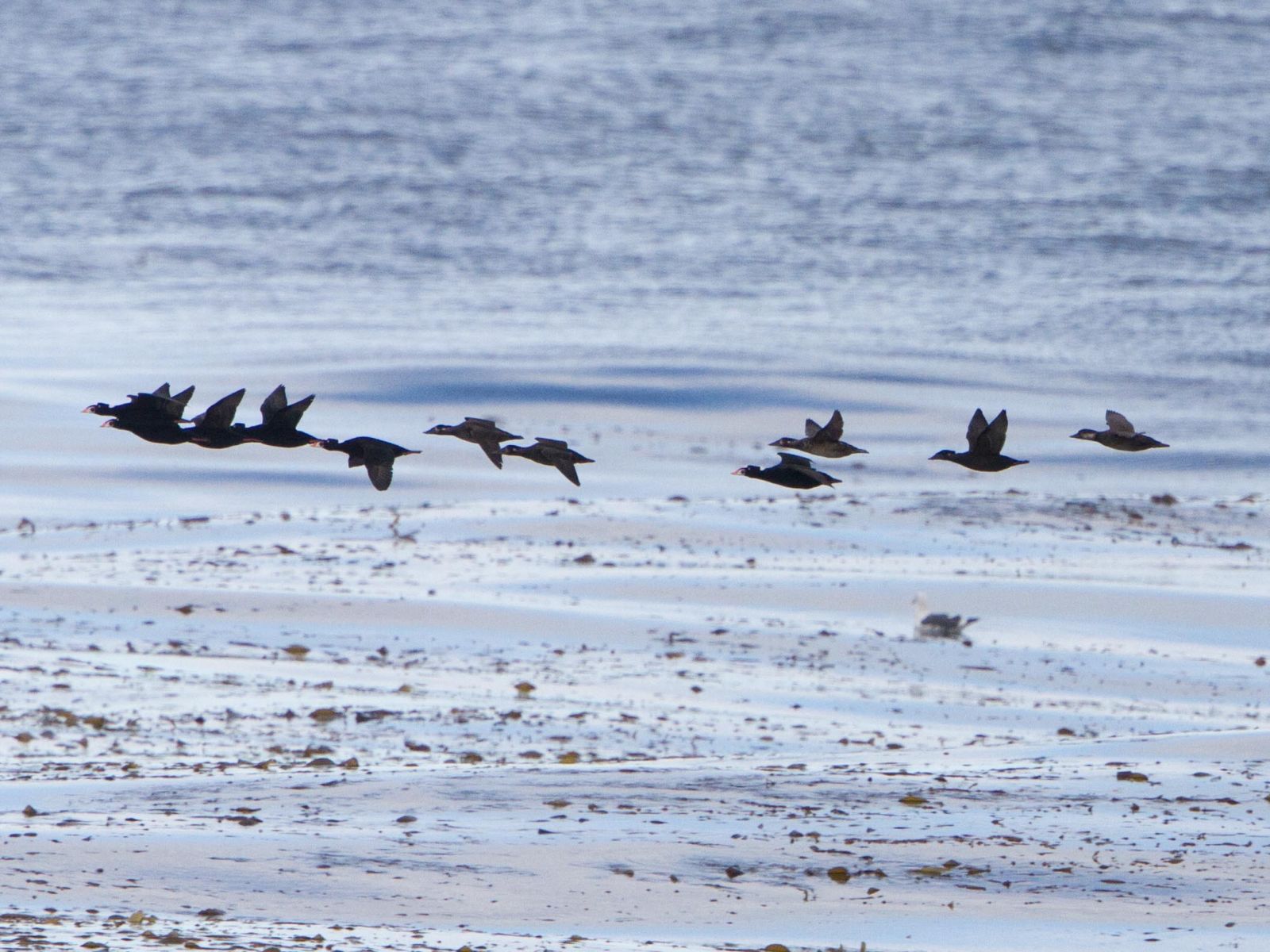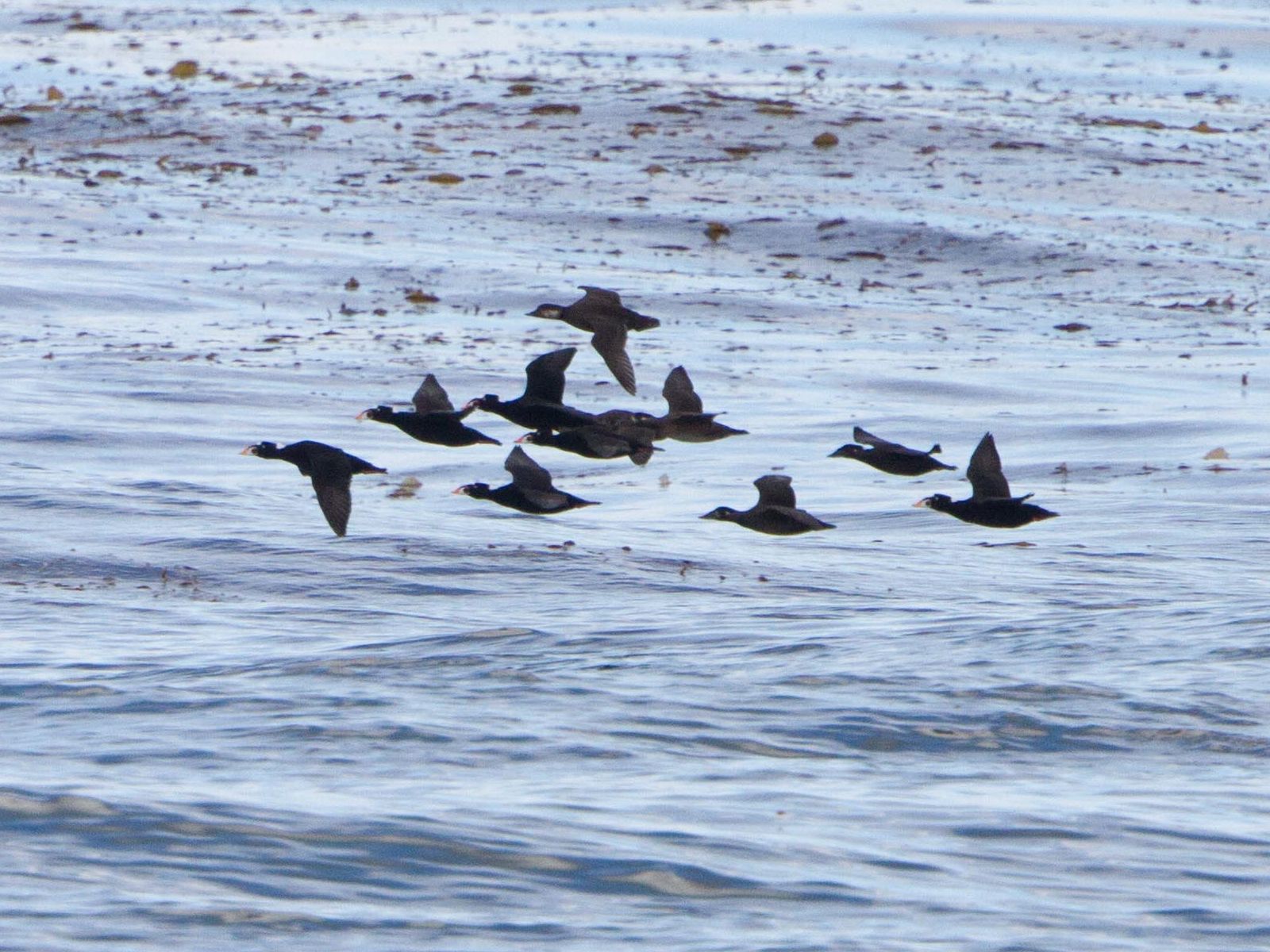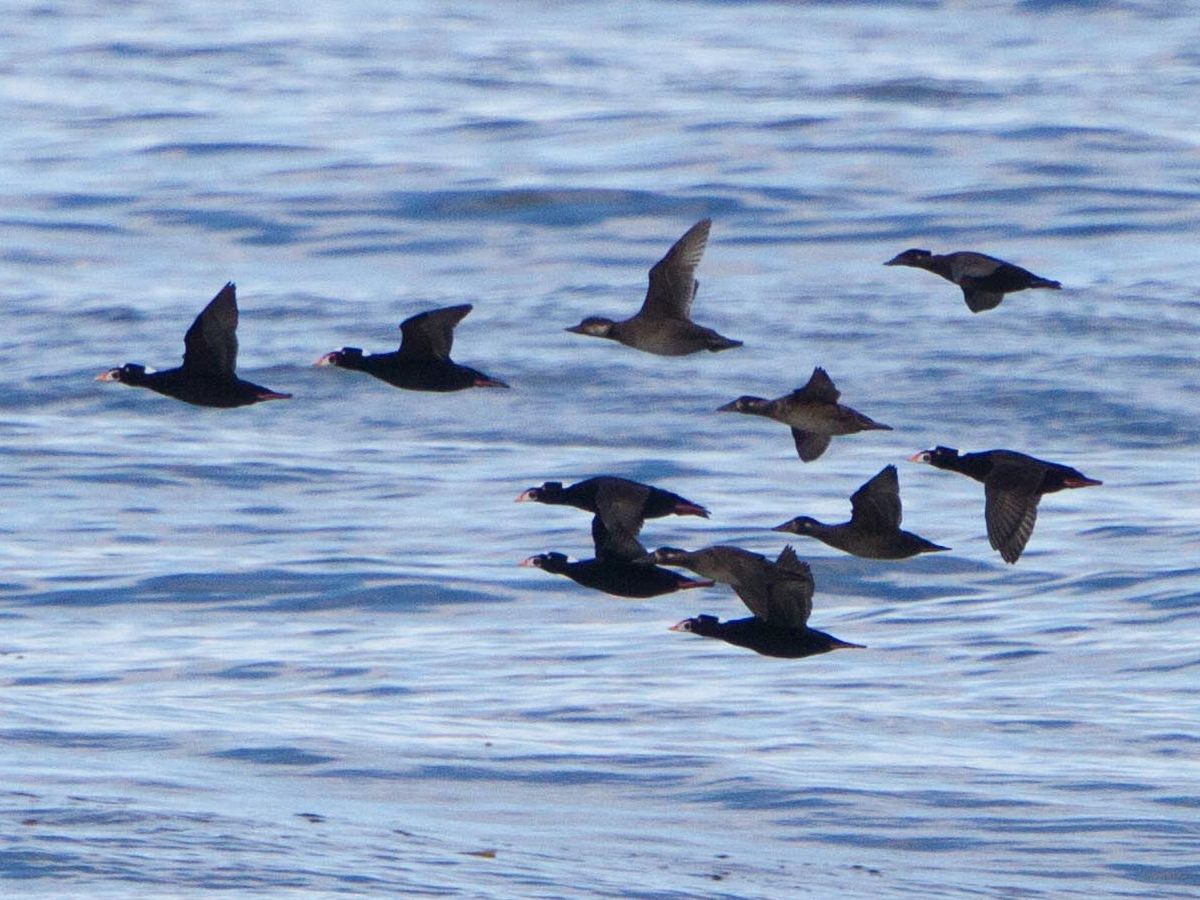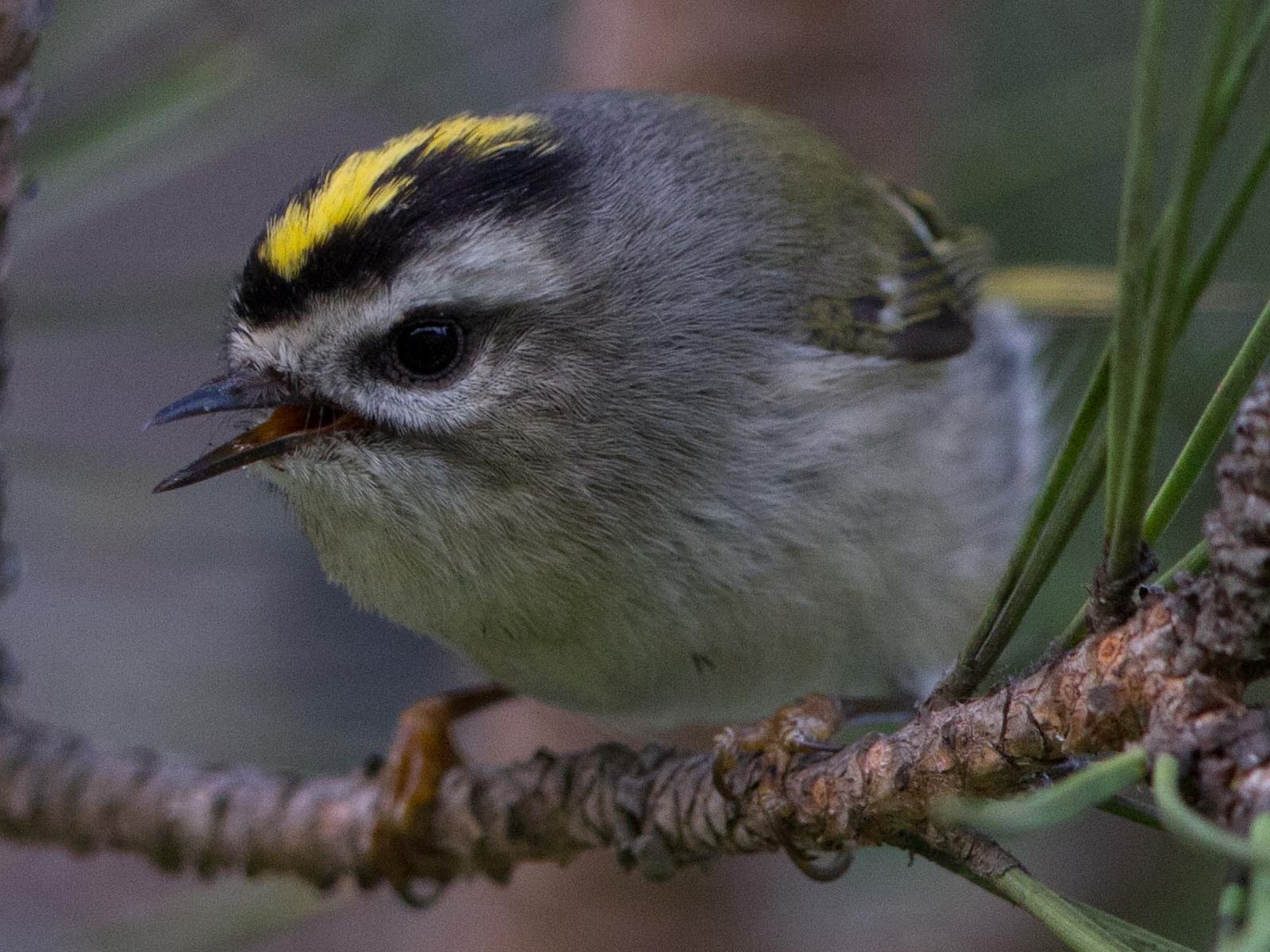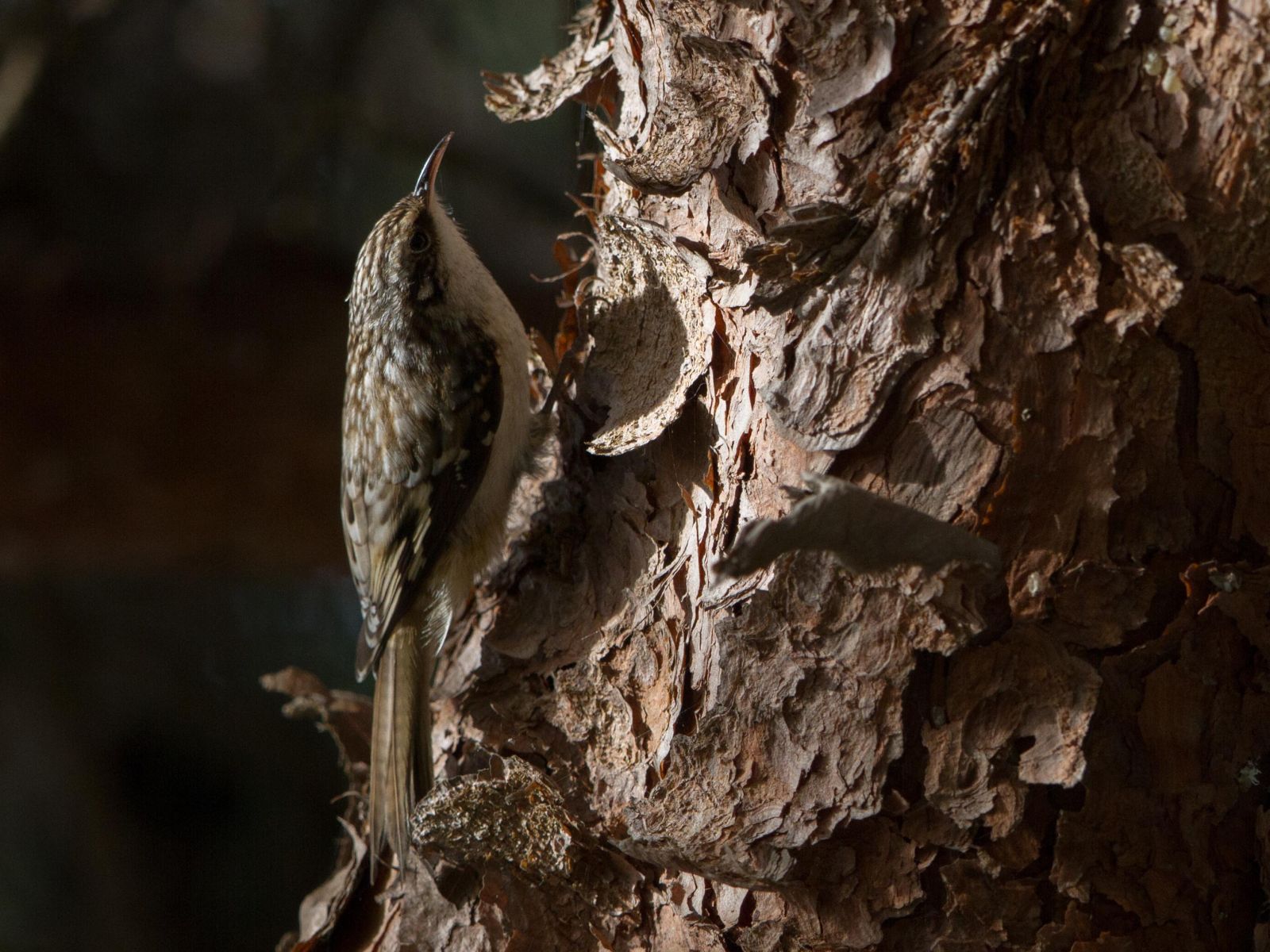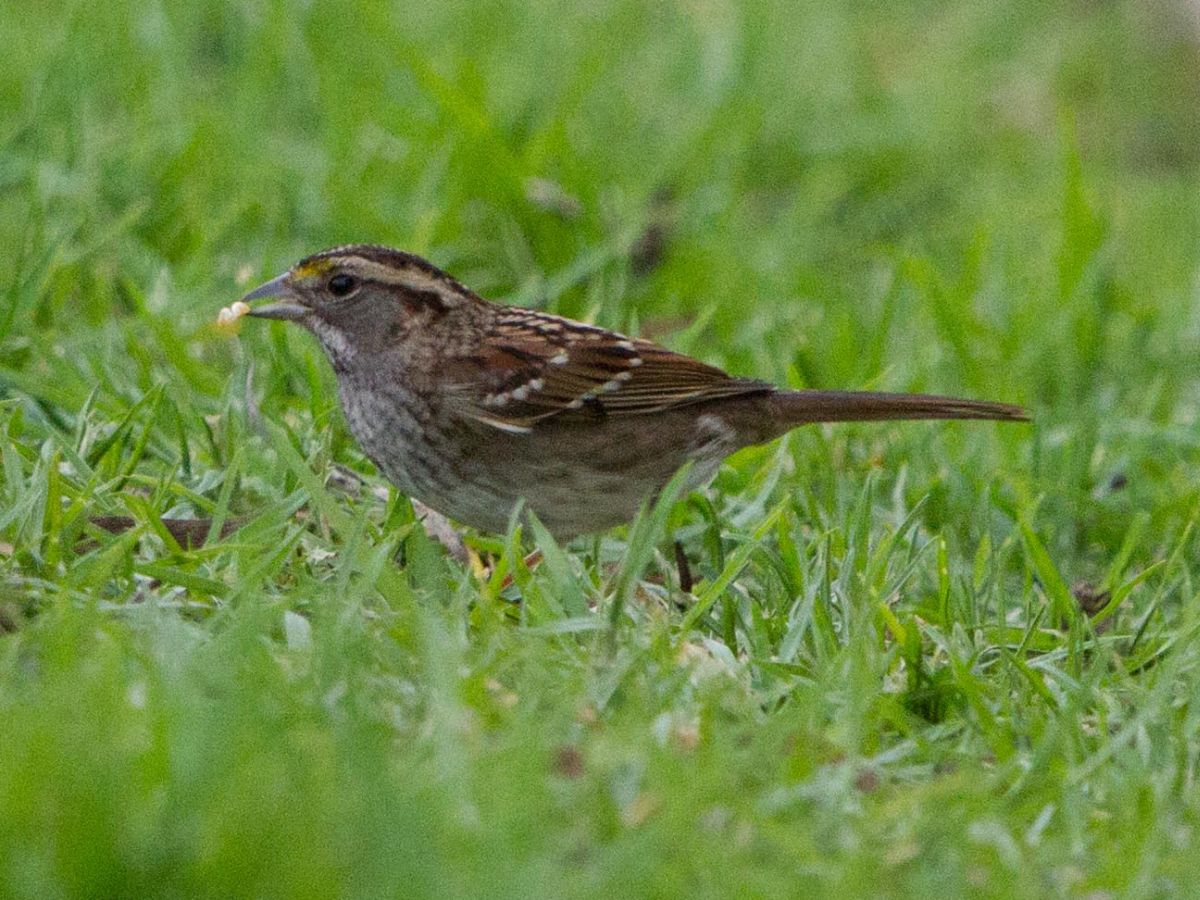[All photographs copyright, Gary Nunn 2014] – On 18 Jan 2014 I ventured offshore San Diego with Dave Povey, Tom Blackman, and Mike Goldhamer in search of seabirds. Sea conditions were calm and with only a slight breeze the seabird action was a bit slow. However we were able to spot alcids at some distance particularly in the glassier looking areas of water. On this trip we found a total of nine Rhinoceros Auklet Cerorhinca monocerata which is a high count here so far for the 2013/2014 winter period. In amongst the largest group, of three individuals together, we observed a peculiar behavior as one bird appeared to be actively carrying around a few strands of Eelgrass. I thought maybe it was tangled in the stringy vegetation but close examination of photographs seem to show it is actually gripping the vegetable matter at the mid point of its mandibles. We followed these three Rhinoceros Auklet around for several minutes and this bird refused to drop the vegetation eventually flying off with it! Searching around on the internet I found a photograph of an Atlantic Puffin carrying vegetation in a similar manner. Evidently these alcids bring nest lining material, such as grasses and feathers, to their burrows and can be seen flying around holding such things. Based on current knowledge we are some considerable distance from known nesting areas of Rhinoceros Auklet, which may breed as close as the southern California Channel Islands to the north. Perhaps this individual just has the uncontrollable urge to collect nest lining material? We were also in sight of islands to the south, Islas Los Coronados in Baja California, Mexico. Could this be a colonizer headed to those islands?
We came across another Rhinoceros Auklet by itself which allowed quite a close approach for photography. This individual already has a fairly large grown horn at the base of the upper mandible and small yellowish-white plumes on the face.

